7 of the World’s Best Places to See Graffiti and Street Art
/While graffiti was once considered vandalism or gang-related, it has transformed in recent years to become a wildly popular and beloved form of expressive art in major tourist cities around the world. Graffiti and street art are now a staple in many well-visited locations where in some cases artists are commissioned to add it to high-profile public buildings. These are some of my favorite places in the world to find ultra-cool graffiti and street art.
By Michelle Segrest, Travel Adventures from #myofficetoday
One of the purest and most beautiful forms of artistic expression—graffiti and street art—can be found throughout the world and even in the most unexpected places. I don’t go hunting for it. Instead, it always finds me. I turn a corner and am immediately drawn to all types of street art. A subconscious force propels my camera in place to snap a photo. I just can’t help myself.
I’ve learned there is a difference between graffiti and street art—one is legal and the other is not. But thankfully, in most cases, even the illegal artistic renderings often remain in place for future generations to enjoy, interpret, capture in photos, and remember always.
I am happy to share with you some of my favorites throughout the world along with a little history or story about each. Art can produce many emotions. The often-controversial and free-loving graffiti in Copenhagen’s Freetown Christiana invokes entirely different emotions than the sobering feeling of standing in front of what is left of the Berlin Wall. All can be appreciated.
I present my favorites in no particular order because to choose my number one favorite would be like trying to choose my favorite child or my favorite dog. It’s just impossible. I realize there are other worldwide sites known for their open-air art galleries, but I chose places that I’ve actually visited and from which I have some personal images in my portfolio (although some of these images were contributed by friends). Please let all of us street-art enthusiasts know in the comments about your favorite outdoor art gallery so I can put them on my bucket list!
The Graffiti Bridge – Pensacola, Florida, USA
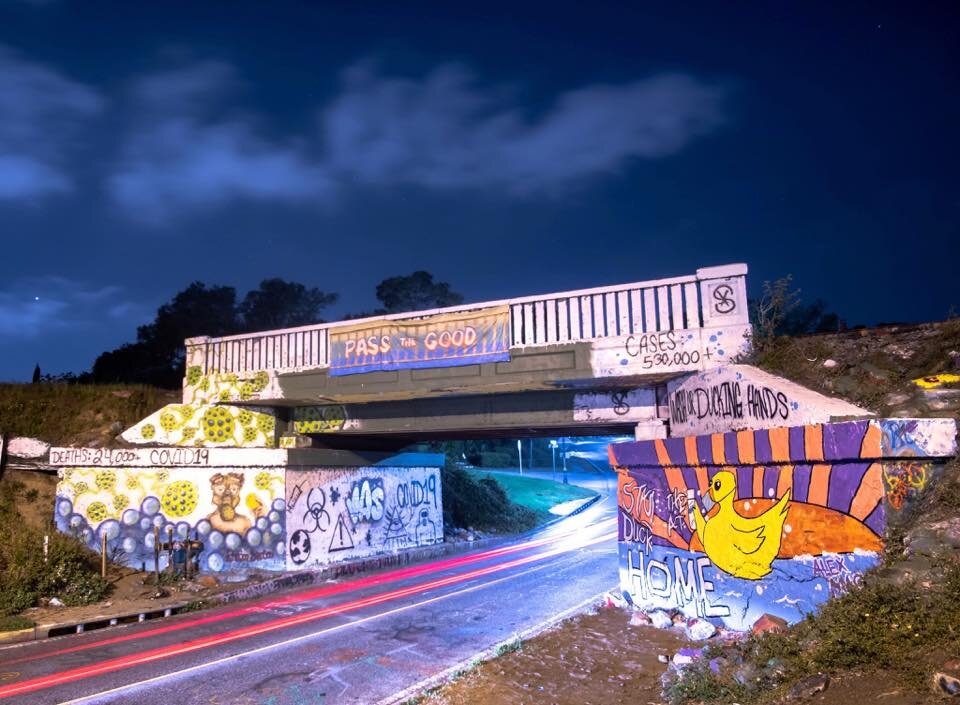
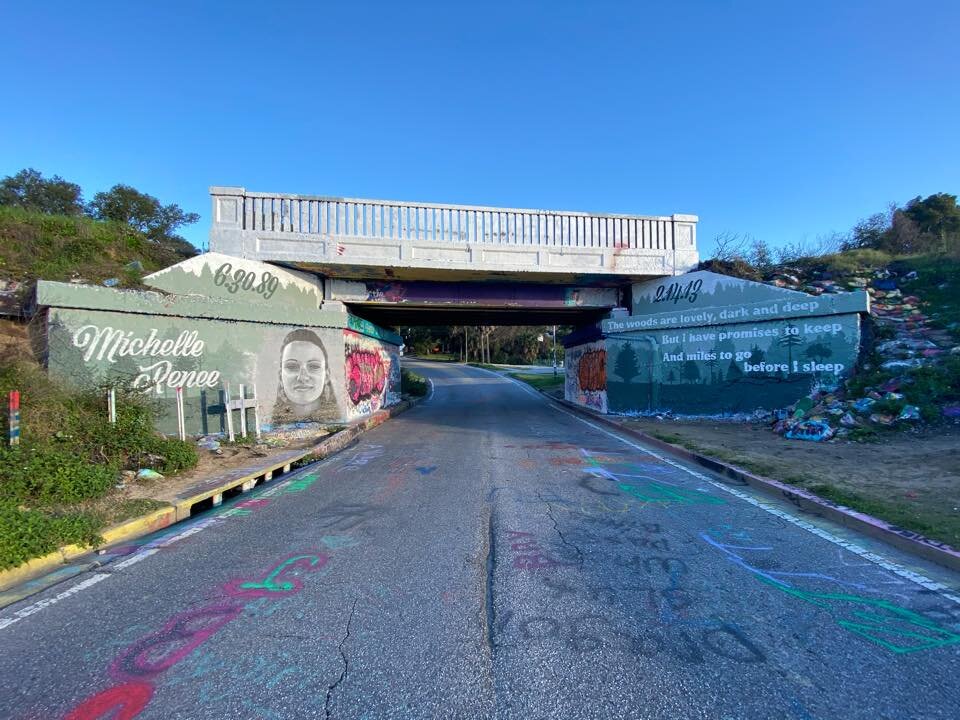

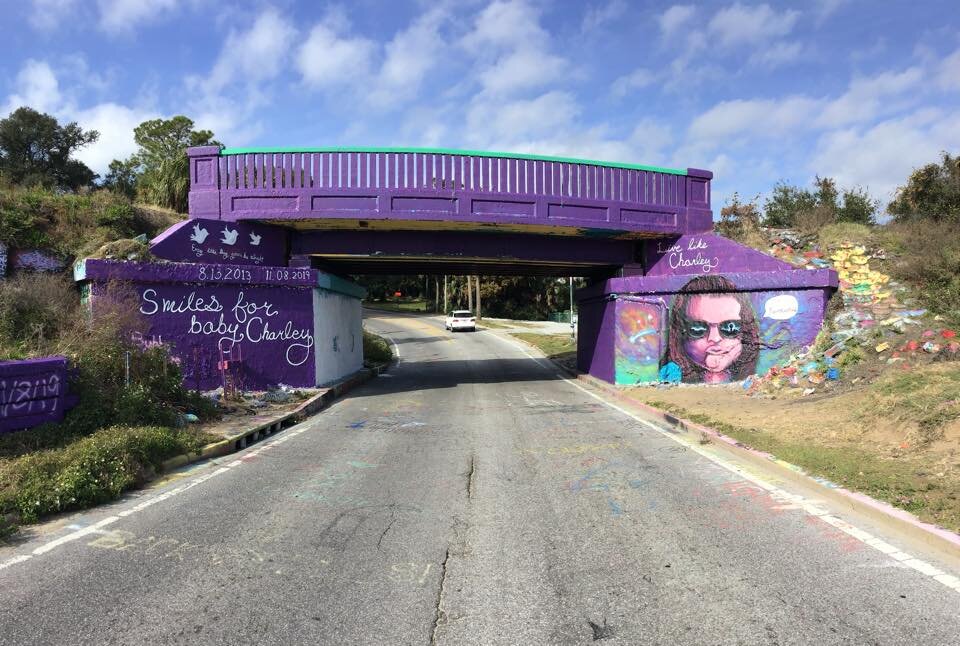
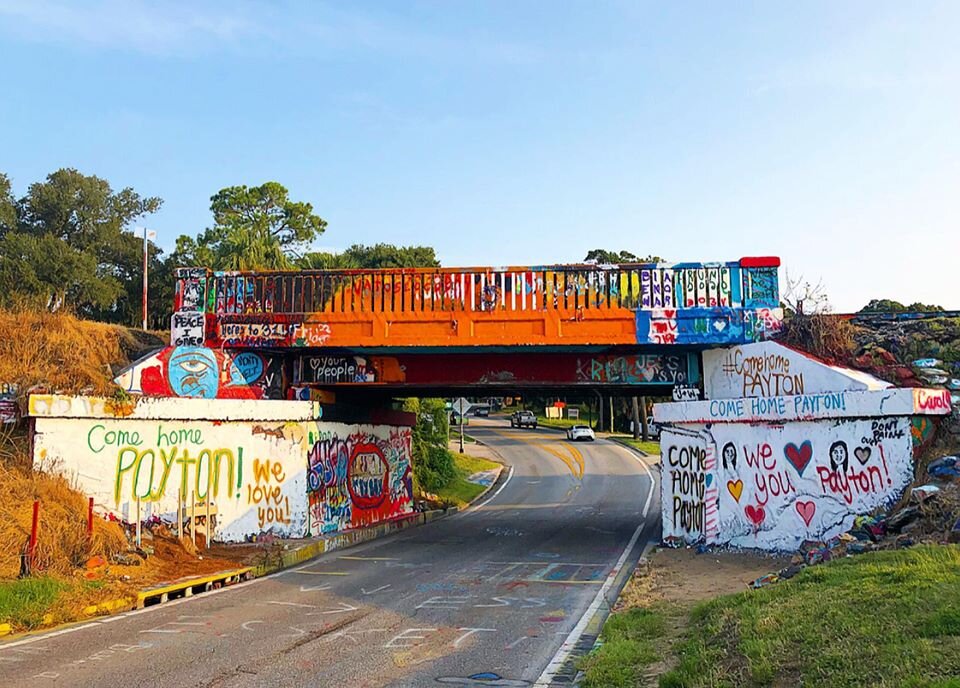
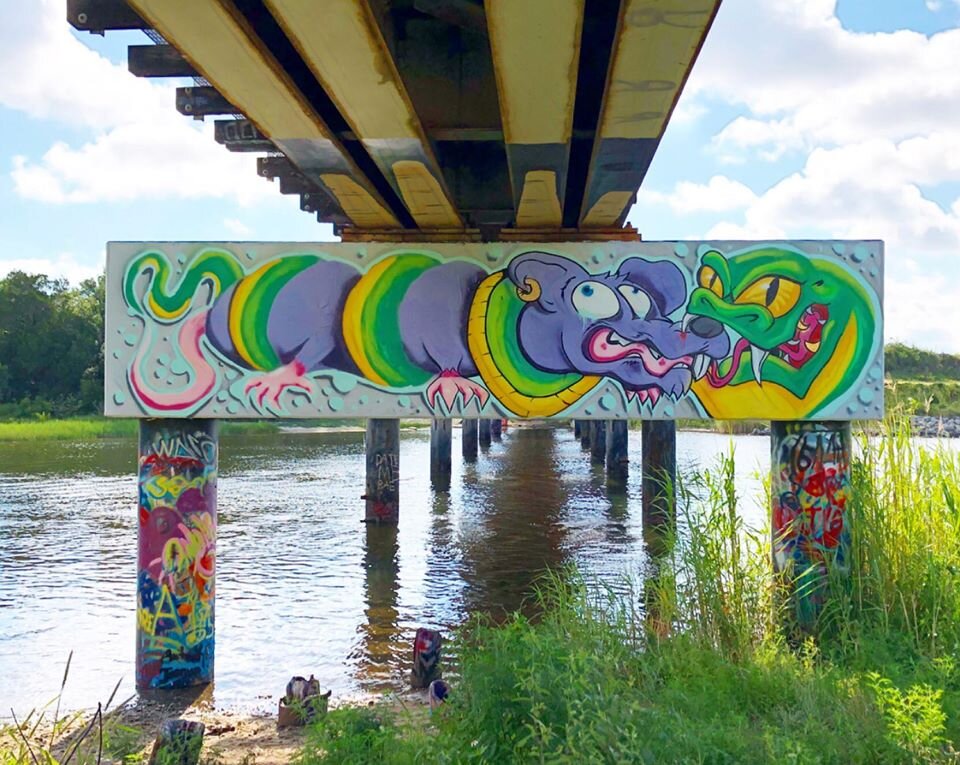
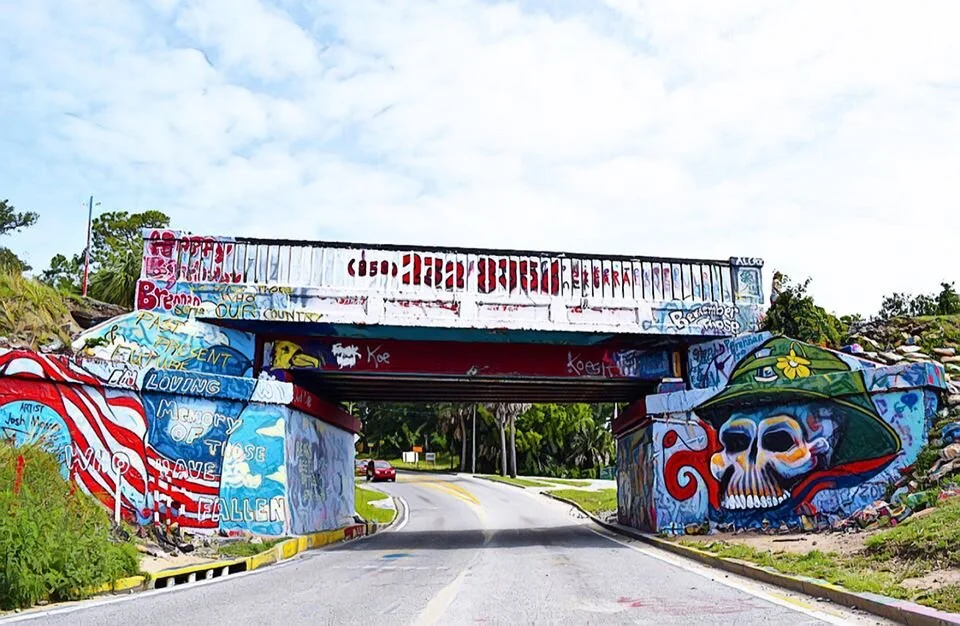
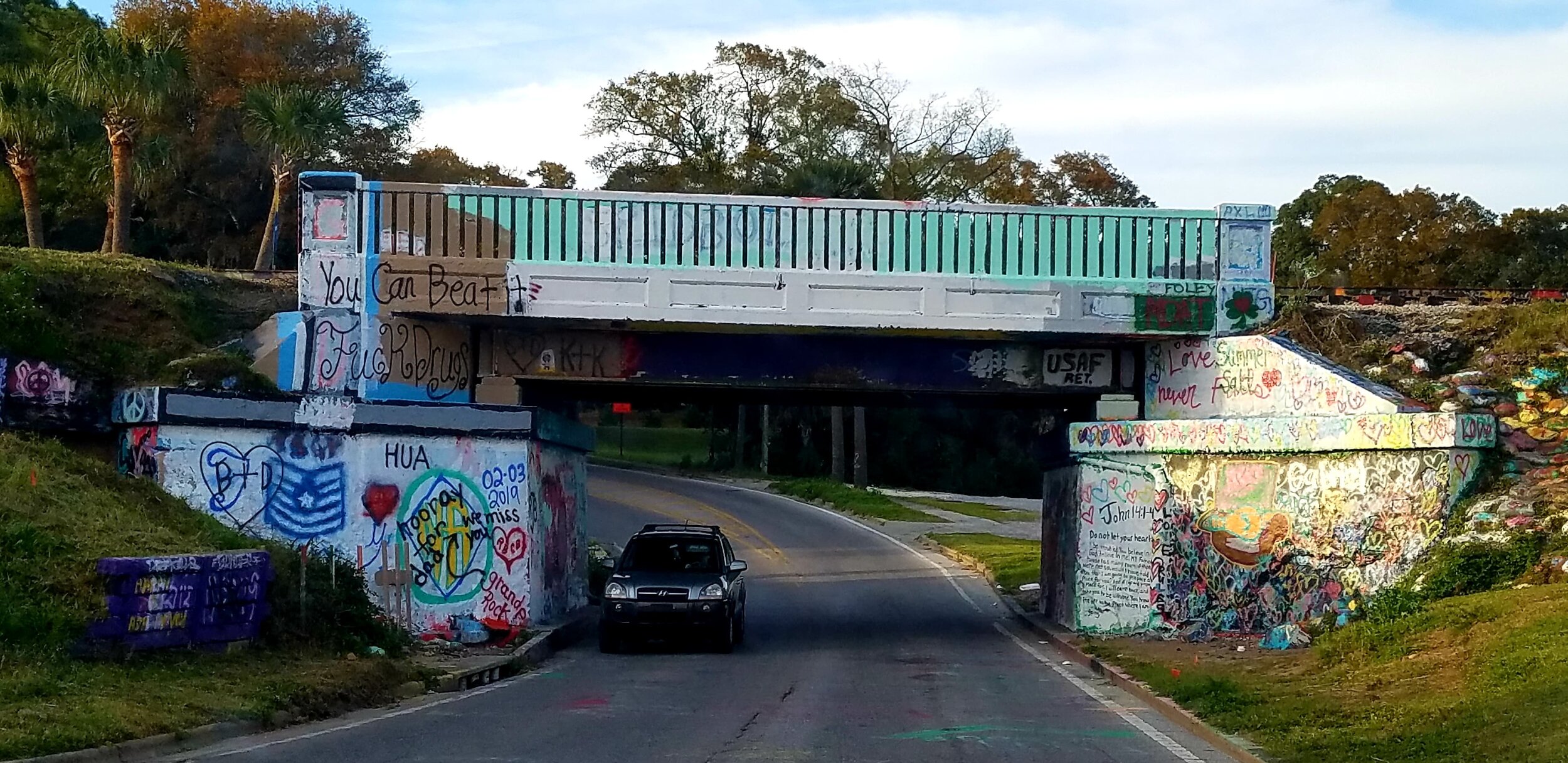
Sometimes you travel all around the globe and then find what you were looking for right in your own backyard. I can’t effectively explain my obsession with graffiti and street art, but if I was asked to define the reason it makes me so happy I could do it in three words—The Graffiti Bridge.
The Graffiti Bridge is located about 40 miles from my home on an old railroad overpass in the westernmost city of the Florida panhandle. Built in 1888, sometime around 1935 locals, artists, and graffiti enthusiasts began making declarations of love, support, encouragement, and individualism on a CSX train trestle canvas that changes almost daily. The constant and expressive artistic embellishments bring the historic bridge to life, creating an ongoing scrapbook that reveals the significant signs of the times as well as personal, political, and thought-provoking renderings.
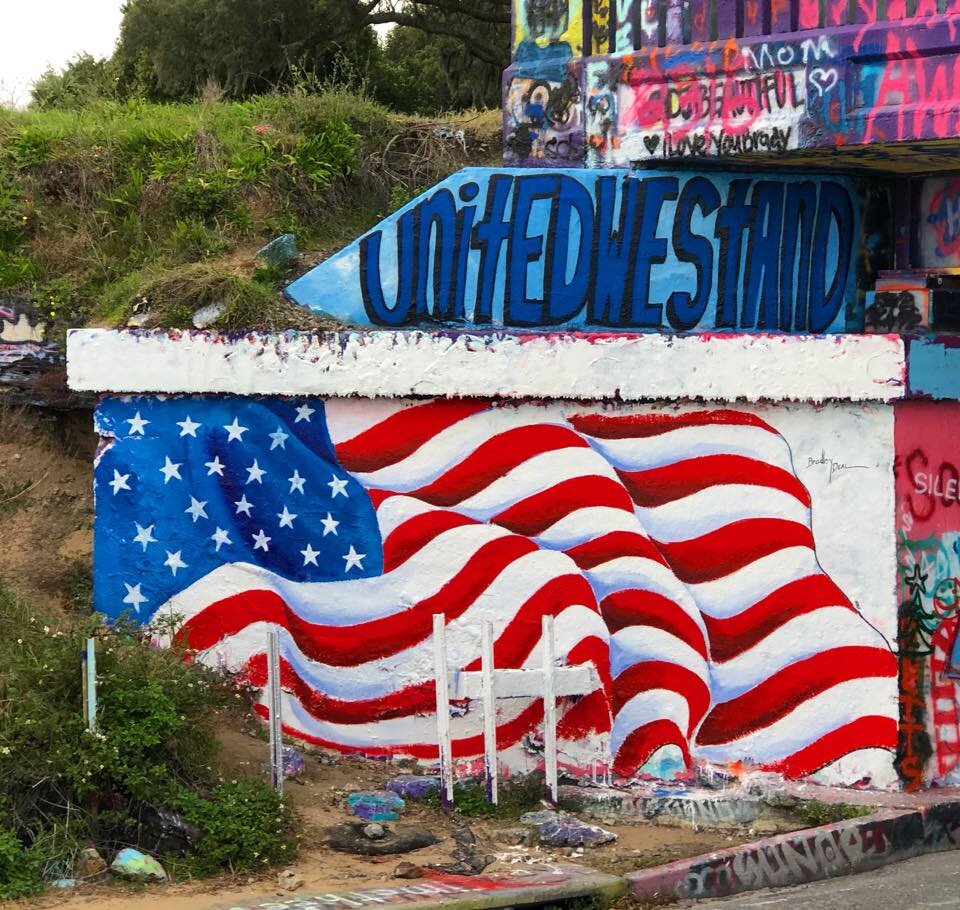
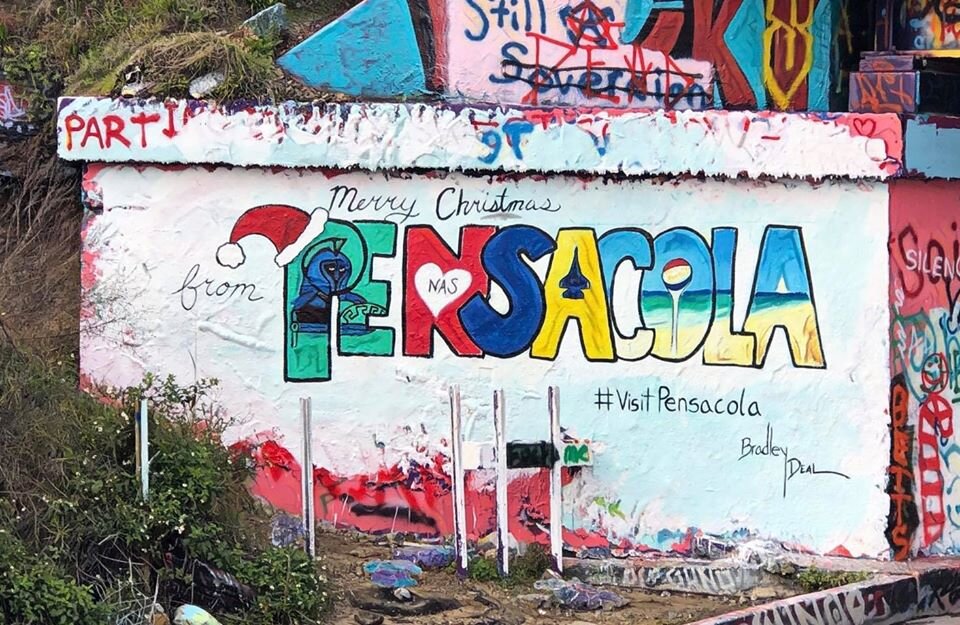
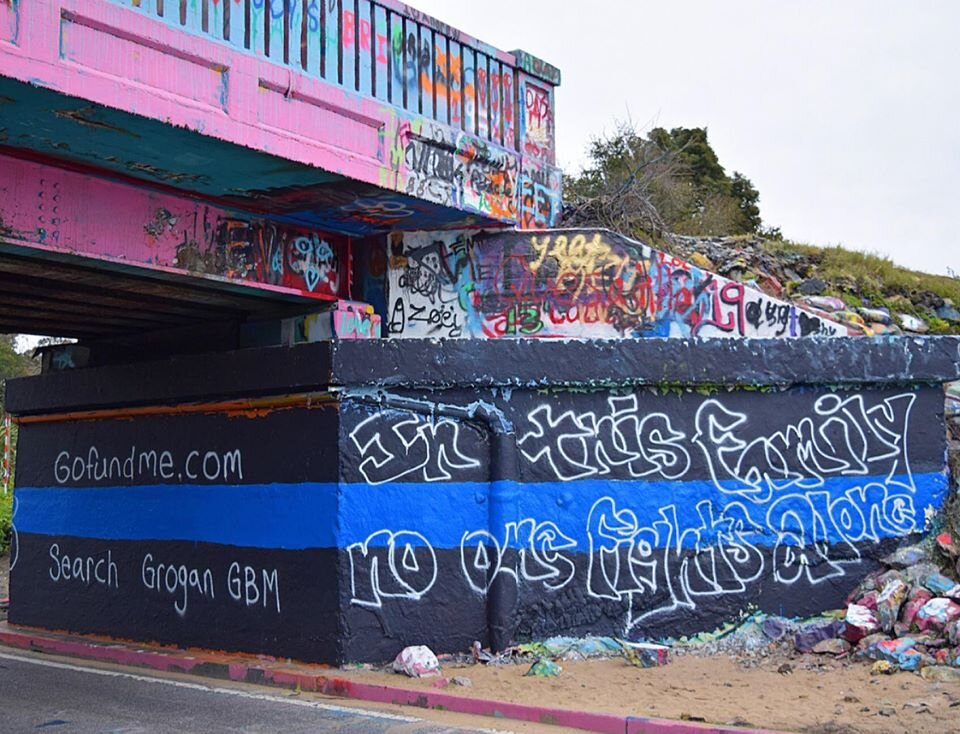

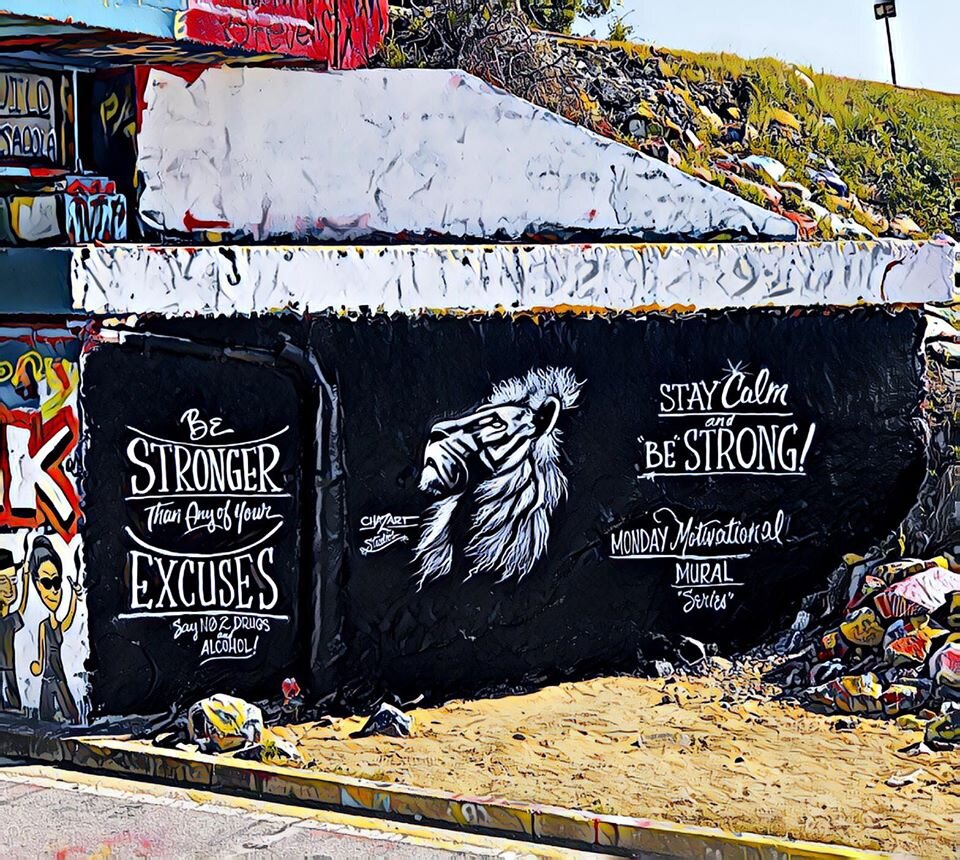
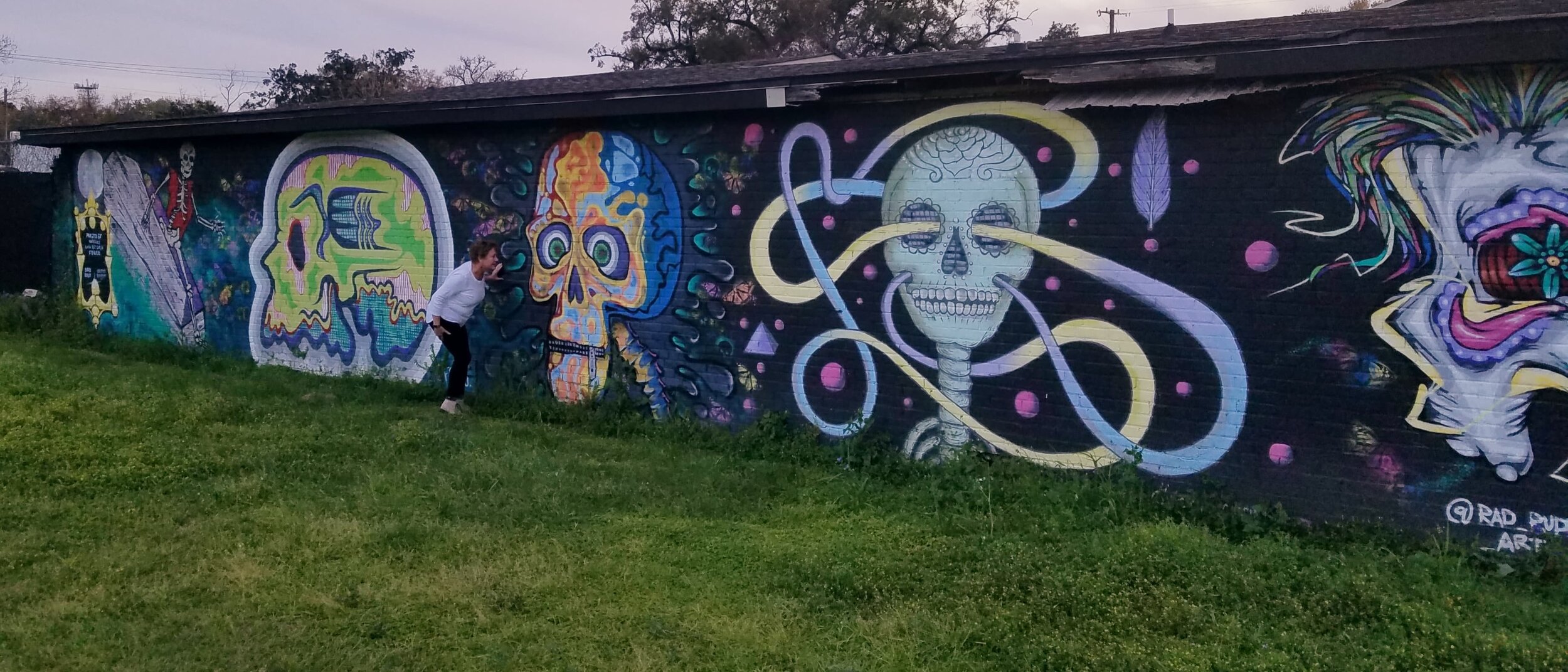
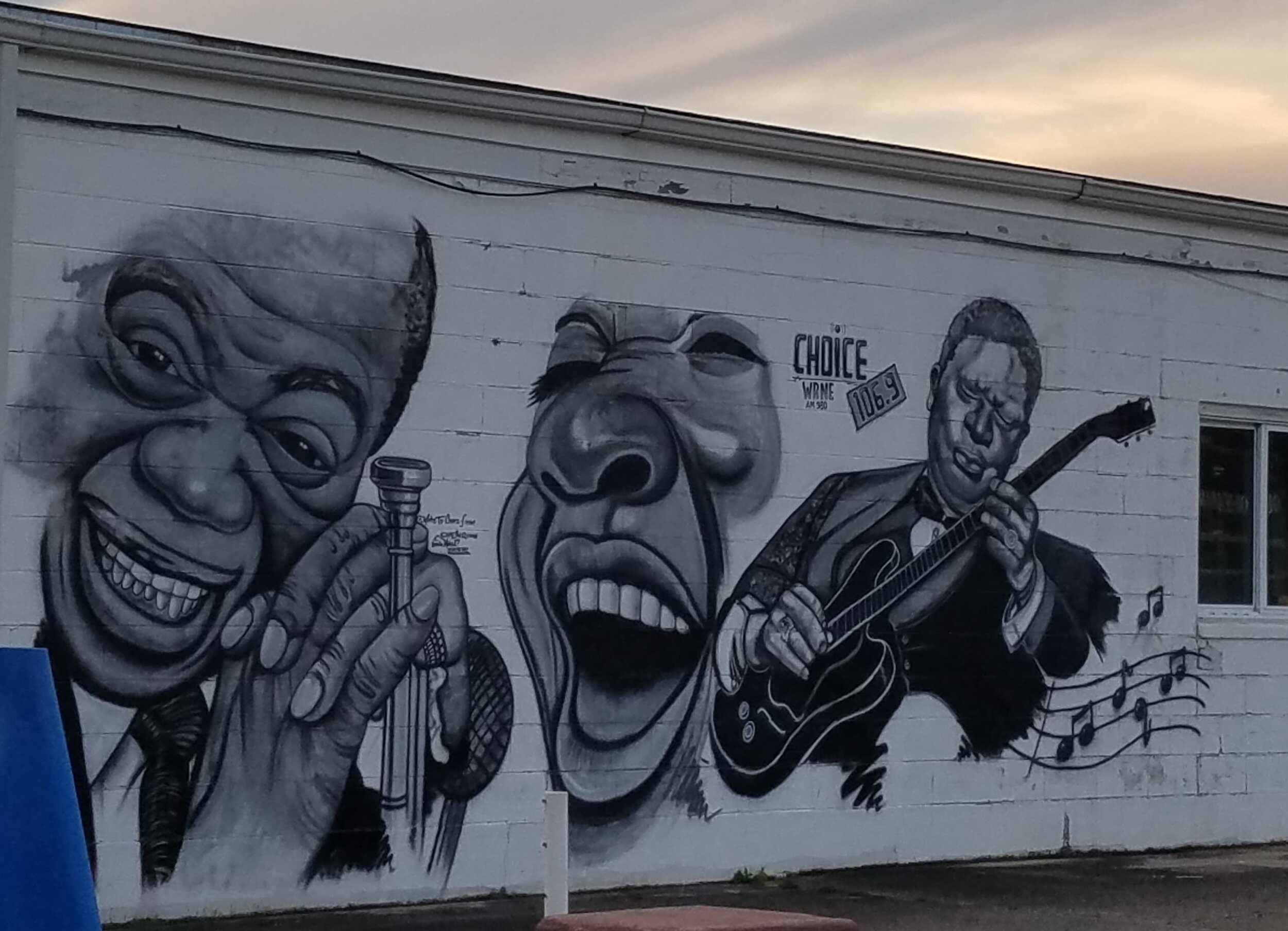
An often-photographed and popular attraction for tourists, most Pensacola locals take great pride in the bridge that tells a daily story while the town’s police look the other way when professional and amateur artists contribute their personal tags when the blazing Florida sun drops below the horizon each evening.
Artists show support for a variety of causes, for example, a memorial to the victims of the Boston Marathon bombing or awareness of childhood cancer.
There are some rules. It is forbidden to paint on areas other than the bridge, including trash cans, the road, nearby parking, or on the train tracks. Often, some locals who consider the bridge an eyesore will protest by painting the entire bridge with a fresh coat of white paint. But they are only contributing to the magic of Pensacola’s unique Graffiti Bridge with a fresh canvas ready for colorful new expression.
2. The Berlin Wall – Berlin, Germany
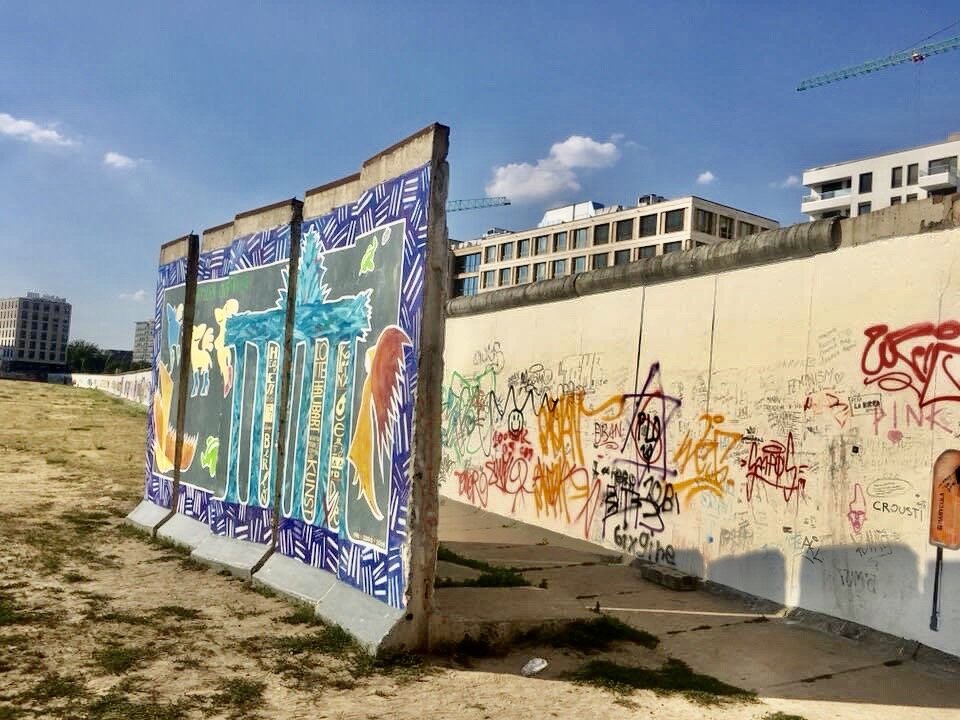
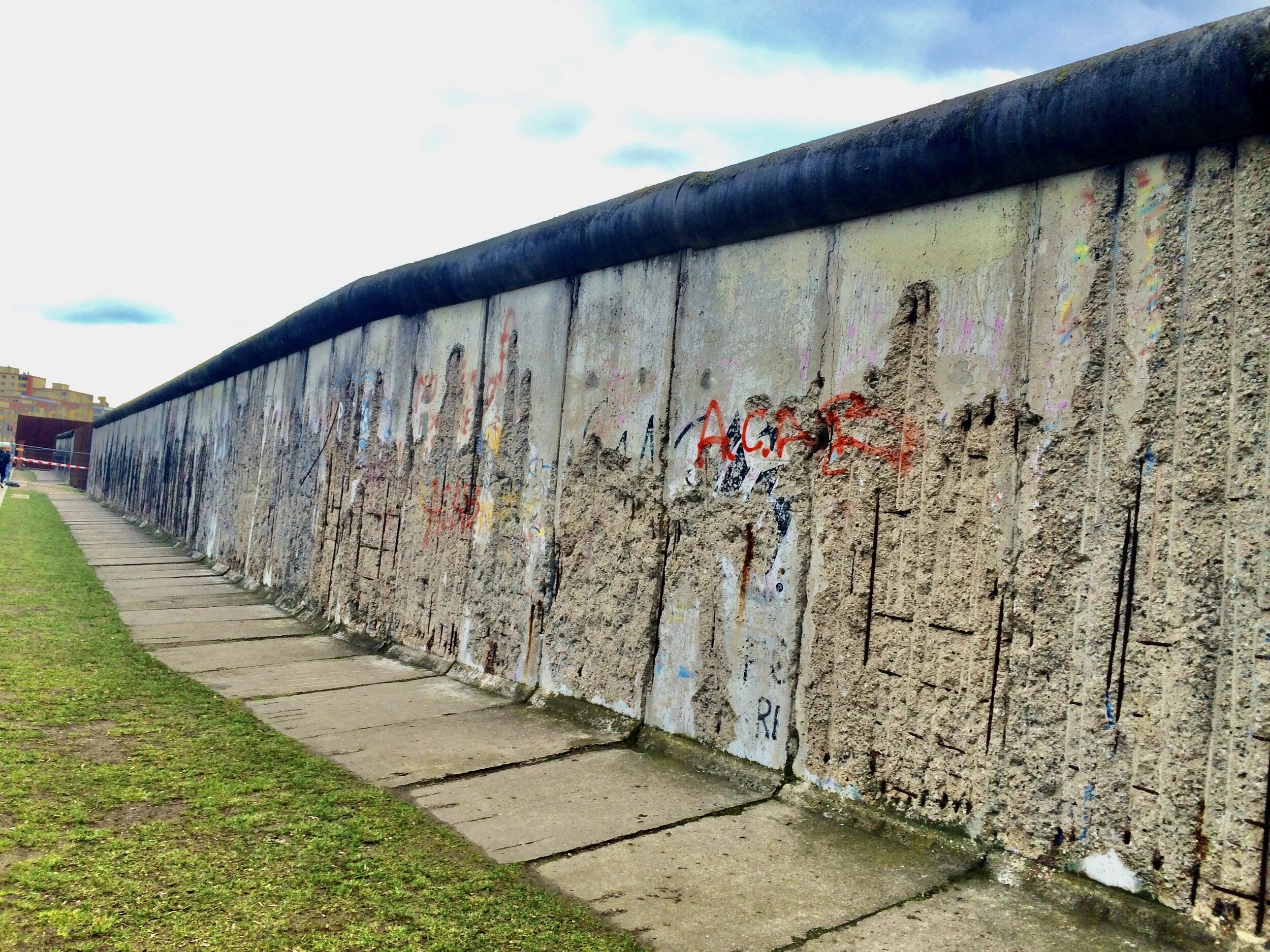
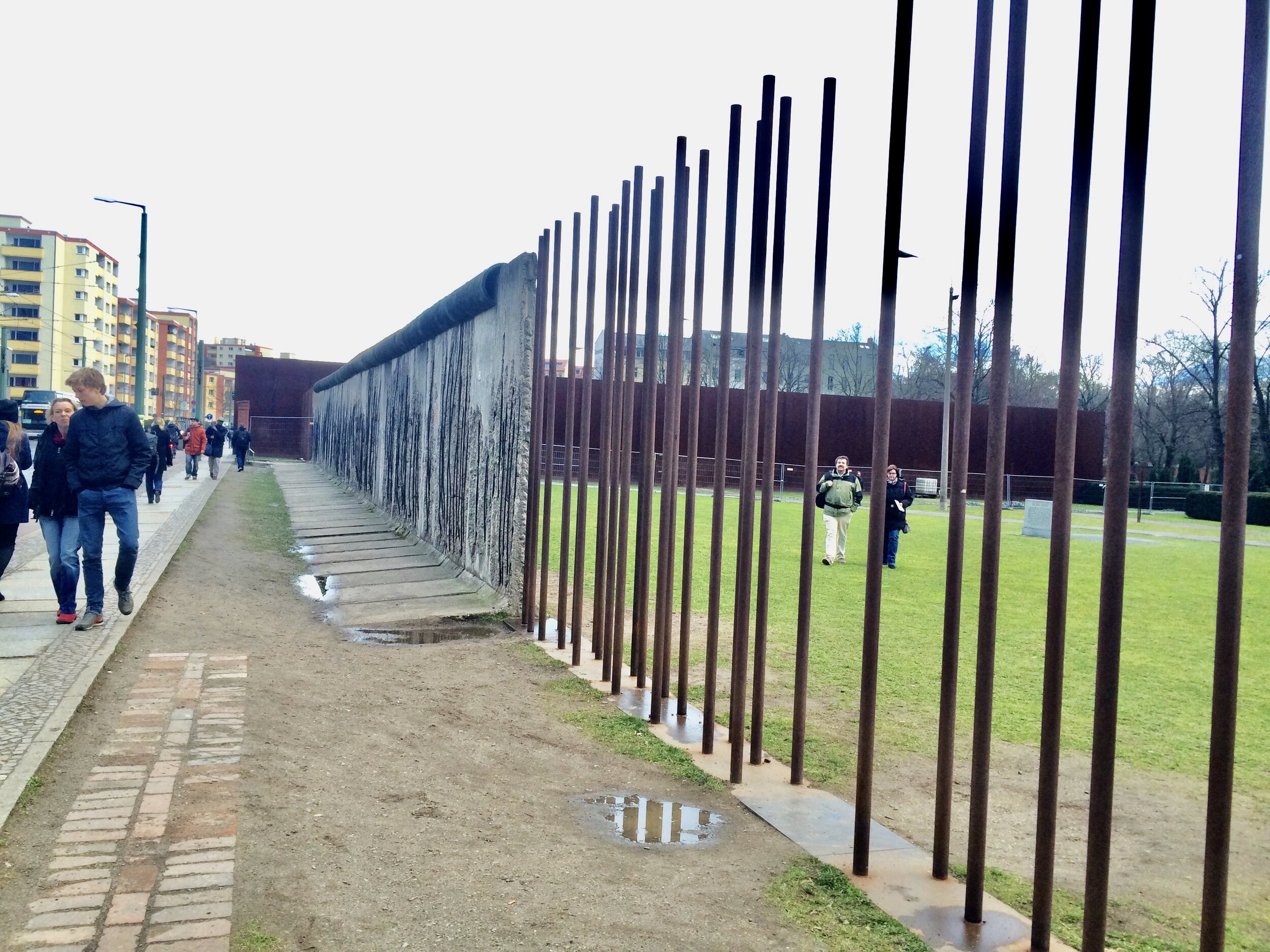
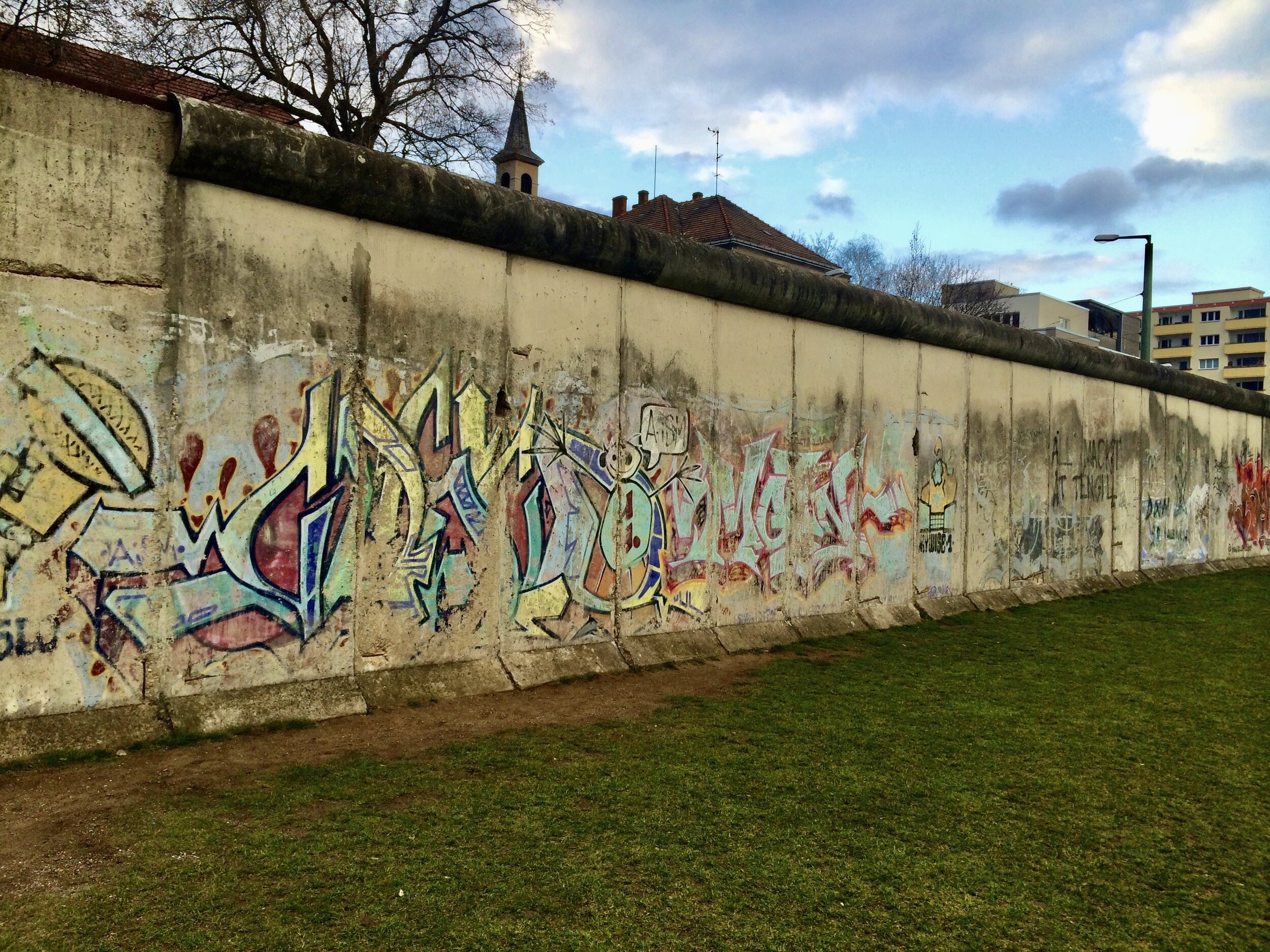
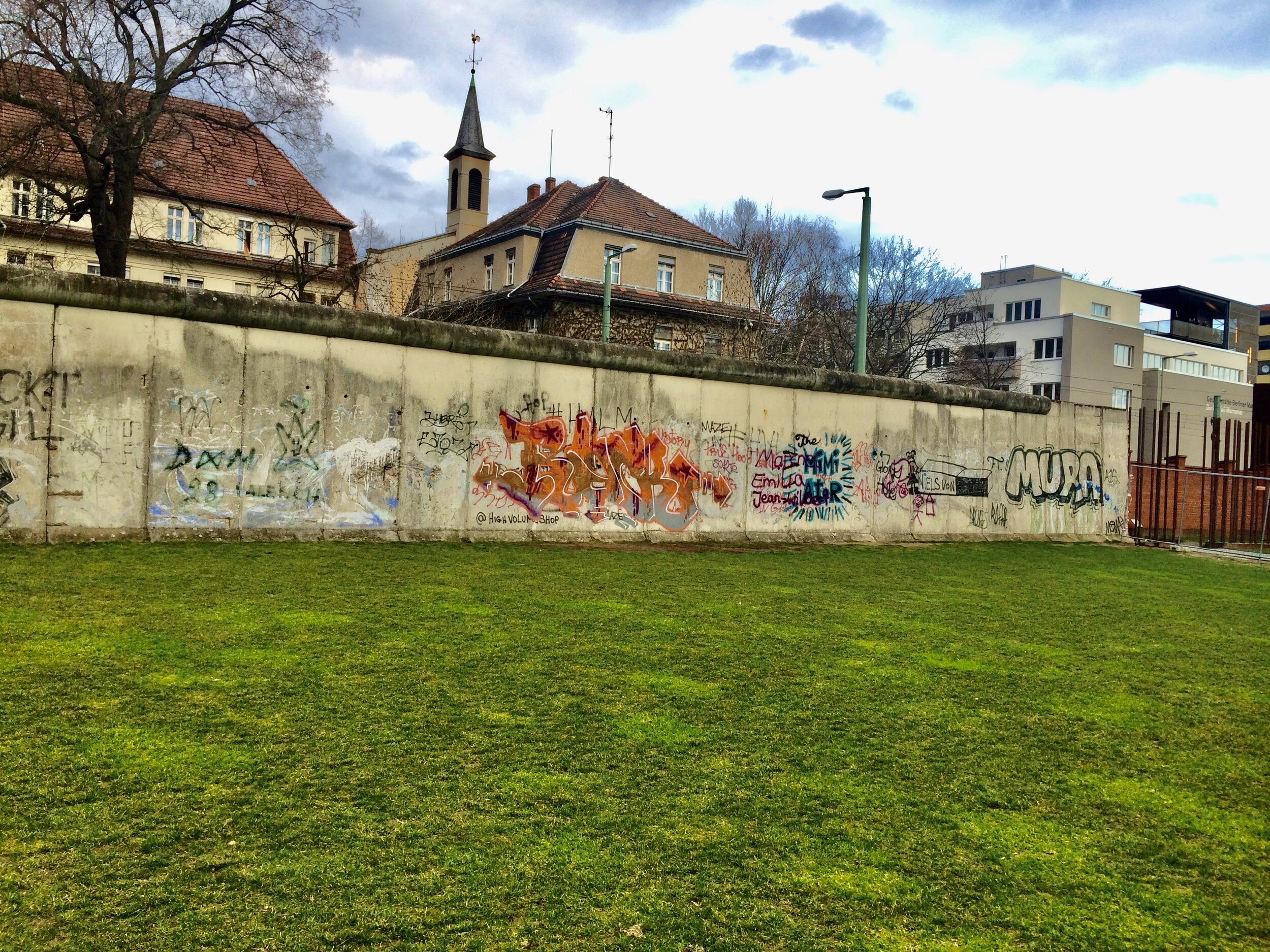
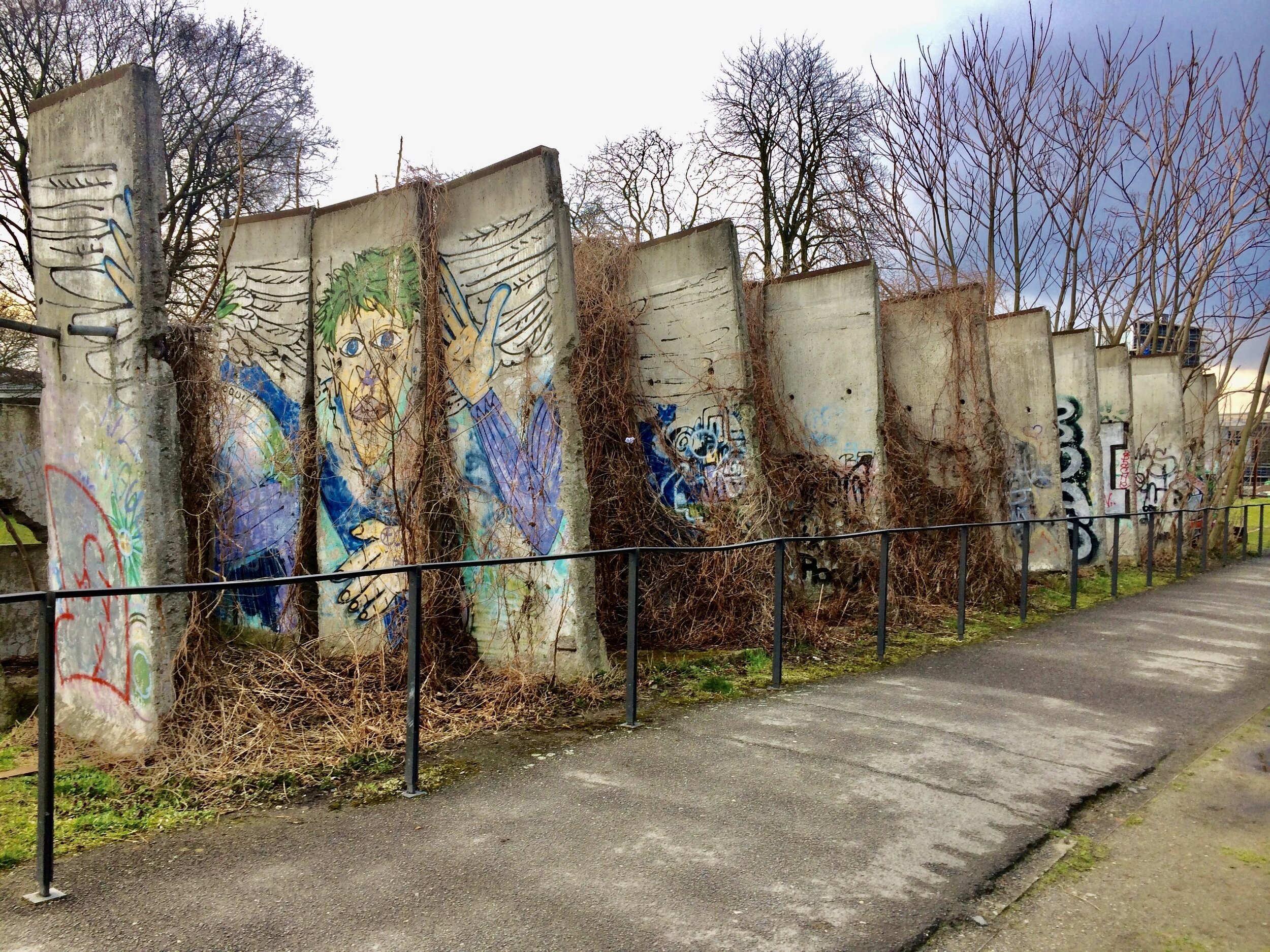
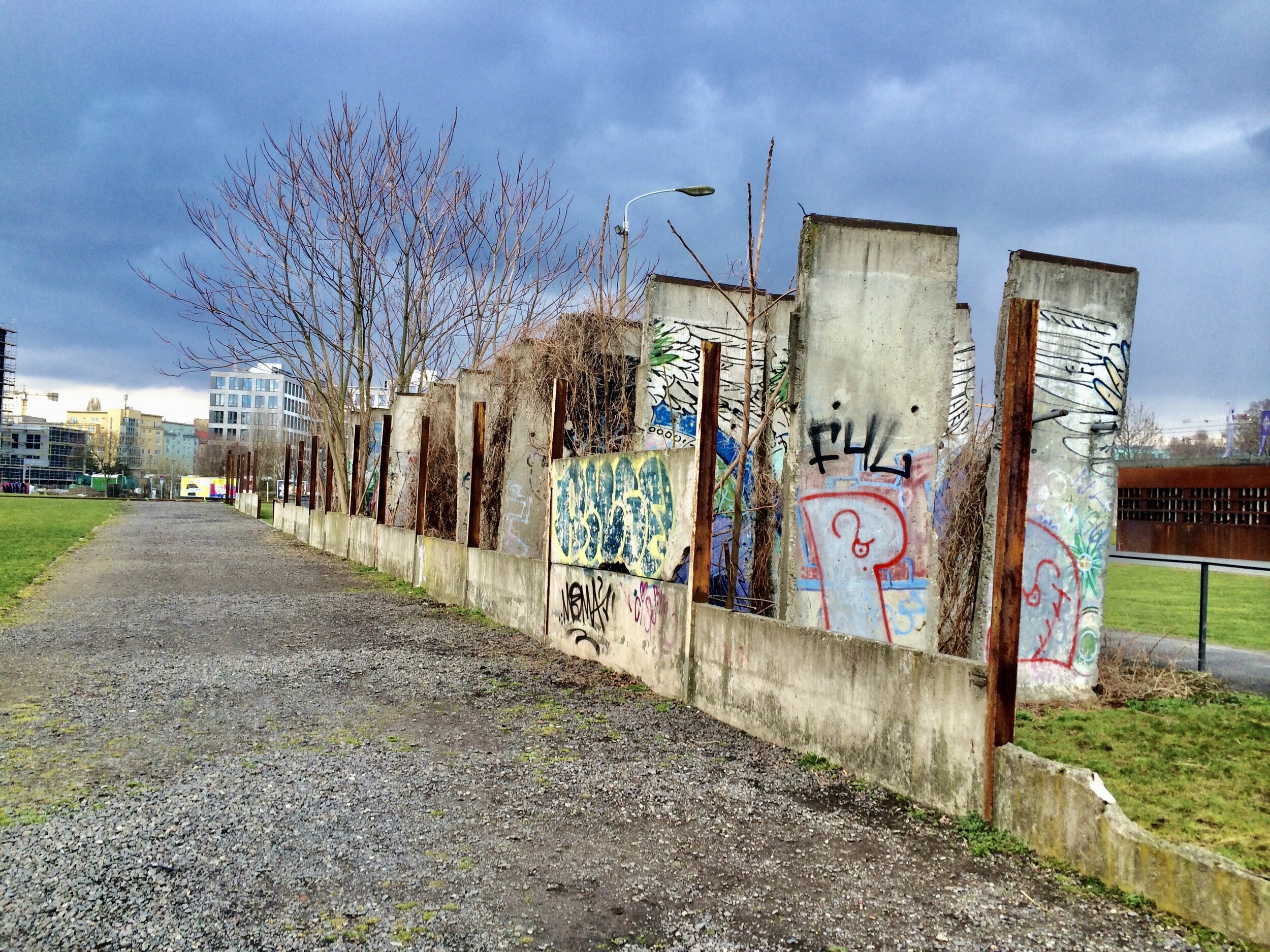
The Berlin Wall is by no means the only place to find interesting, beautiful, and thought-provoking street art in Berlin, Germany, but it is certainly the most historic. The Berlin Wall was built in 1961 to separate West Berlin and East Berlin during the Cold War. Before it’s fall, the Berlin Wall was one of the largest canvases in the world. The West Berlin side had artwork completely covering it, while the East side was blank as people were not allowed to get close to it. The largest open-air art gallery was once a symbol of division and now one of the most historic sites in the world.
Until the wall came down in 1989, more than 5,000 East Germans (including some 600 border guards) managed to cross the border by jumping out of windows adjacent to the wall, climbing over the barbed wire, flying in hot air balloons, crawling through the sewers, and driving through unfortified parts of the wall at high speeds.
Almost all of the wall has been removed and it only exists in places such as Potsdamer Platz, the East Side Gallery, and Bernauer Straße.
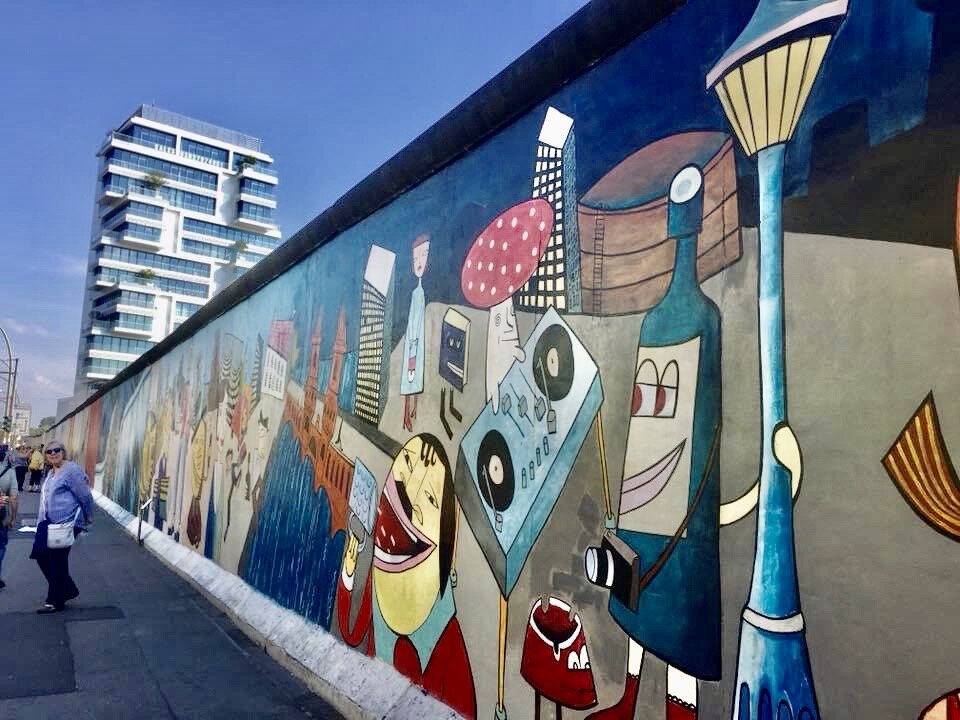

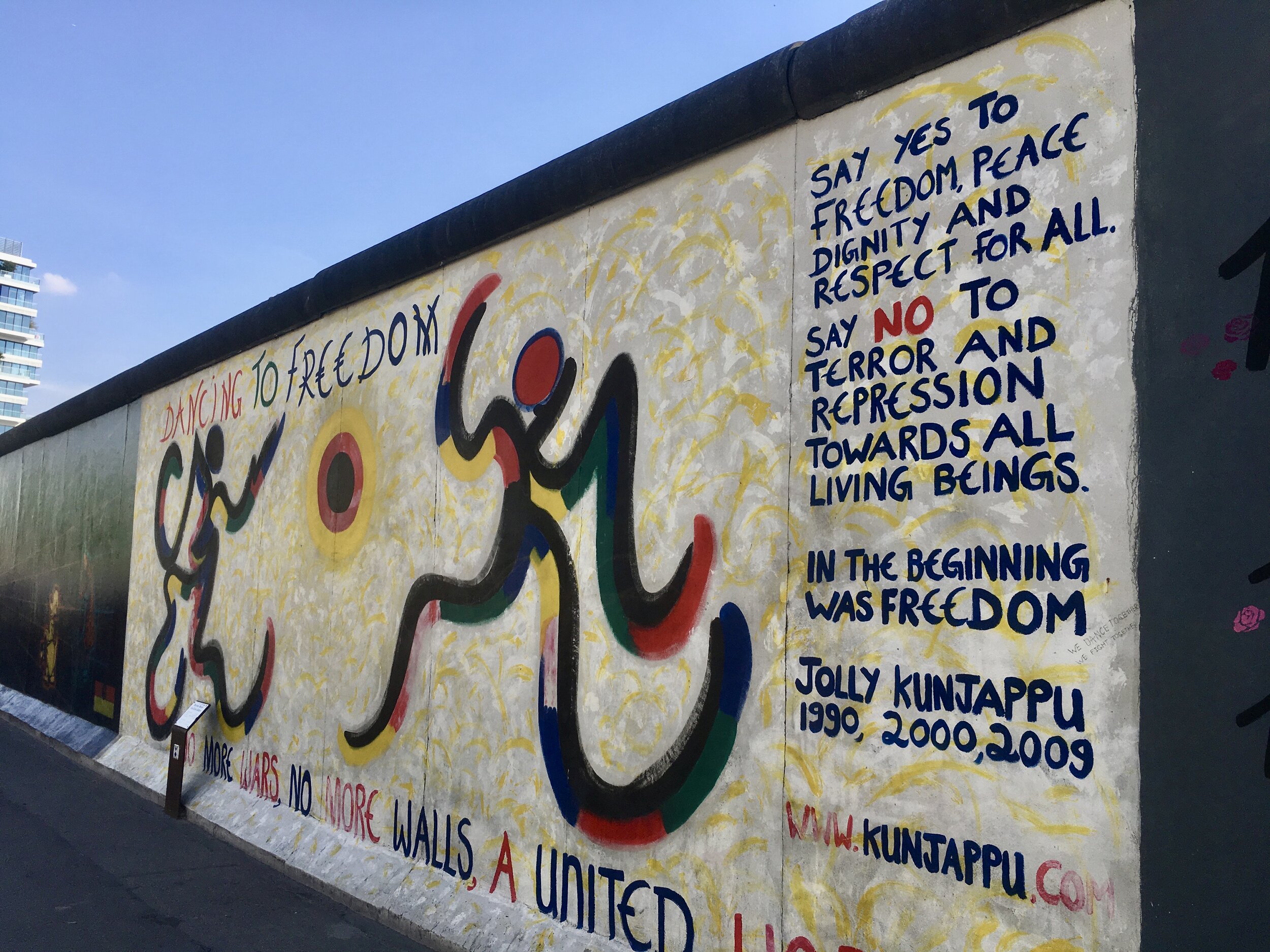
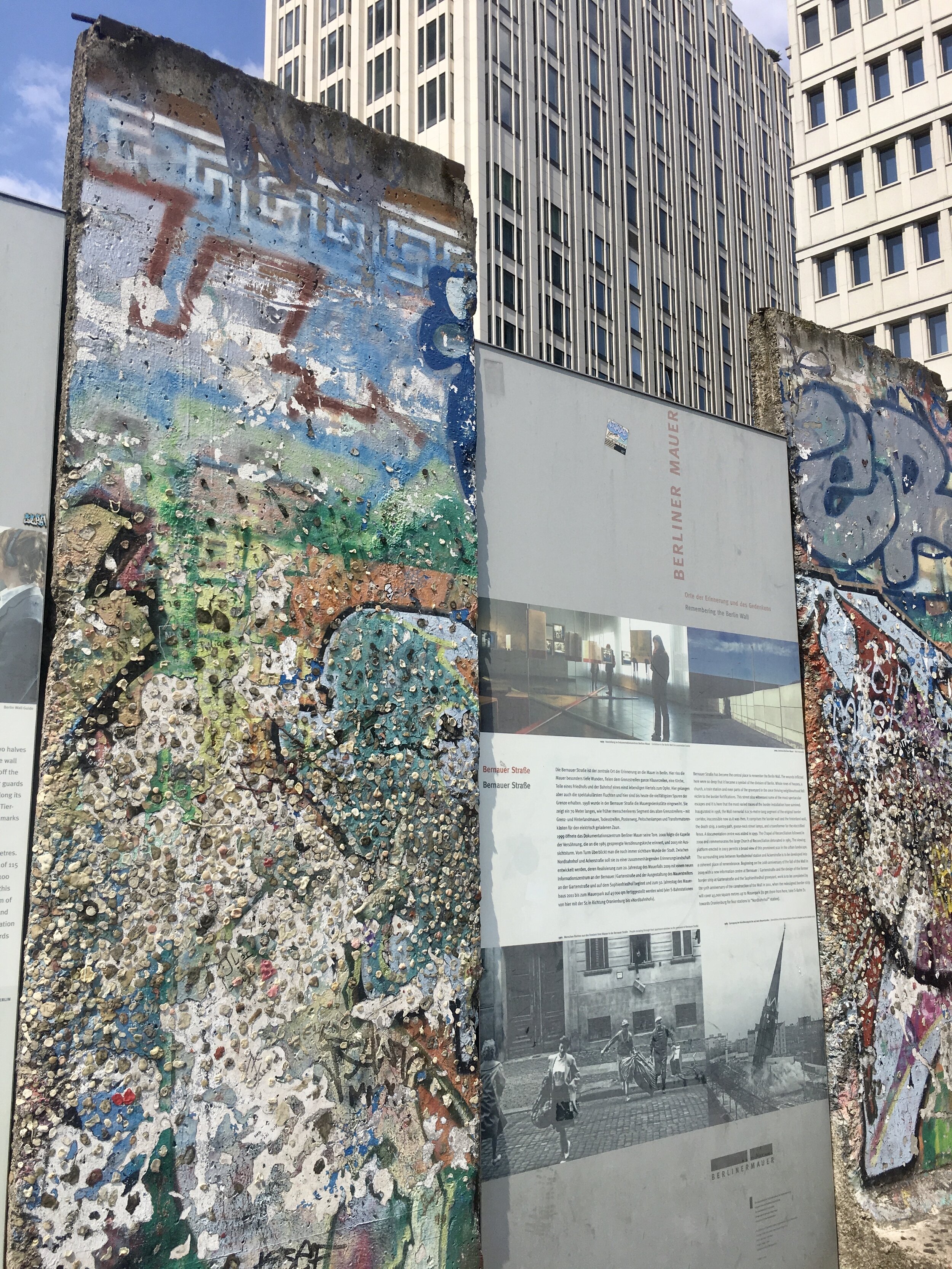
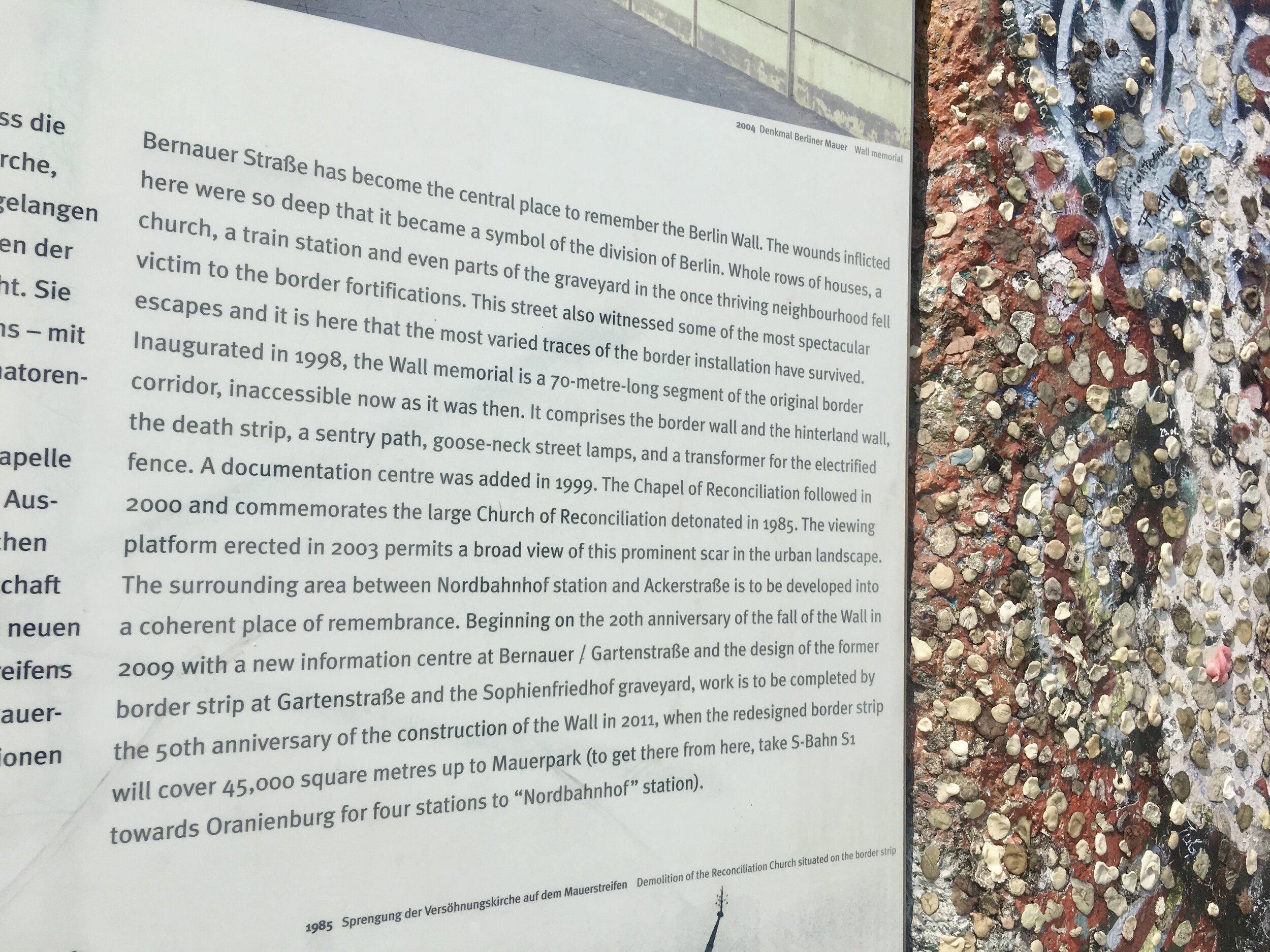
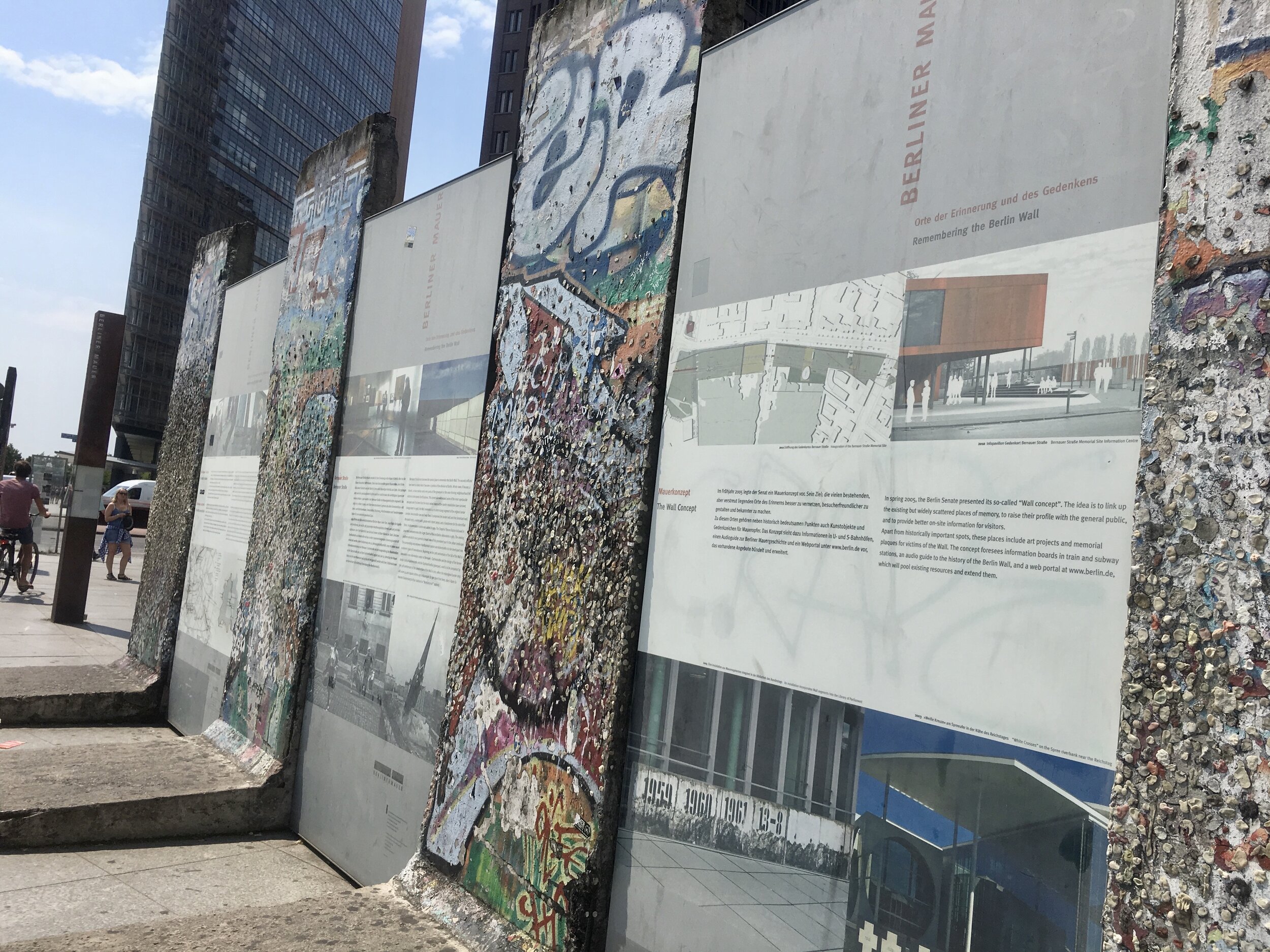
It is impossible in this space to tell all the important stories of the Berlin Wall, but I can tell you that seeing it and touching it is a profound experience. These two articles are must reads if you want to learn more about the famous graffiti of this iconic piece of history.
Graffiti in the Death Strip: The Berlin Wall’s First Street Artist Tells His Story
10 Iconic Murals on the Berlin Wall
In his panoramic mural, The Wall: Living With the Death Strip, Yadegar Asisi’s remarkable art reflects on the atmosphere and day-to-day life of 1980s Berlin in the shadows of the Berlin Wall. I’ve had the pleasure to see this in person twice. It is a moving, meaningful, memorable experience that I highly recommend to anyone interested in a sobering account of this incredible symbol in history.
3. Freetown Christiana – Copenhagen, Denmark
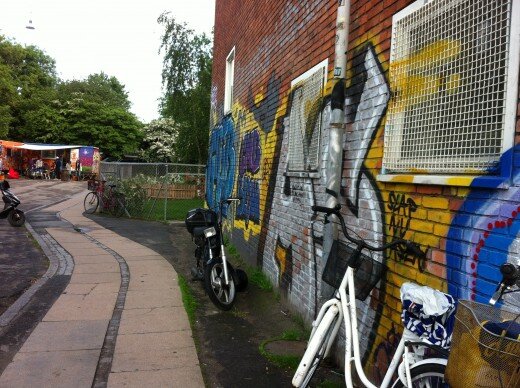
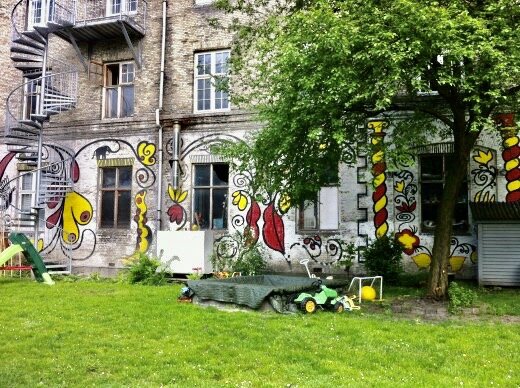

When you enter Freetown, Christiana, you seemingly step into a time machine that drops you in the middle of the 1969 Woodstock Festival. It’s a whole new world, but through a figurative and literal fog, soon everything becomes clear.
Christiania is a self-proclaimed autonomous neighborhood of about 84 acres and some 850 residents in the borough of Christianshavn. Civic authorities in Copenhagen regard Christiania as a large commune, but the area has a unique status in that it is regulated by a special law—the Christiania Law of 1989—which transfers parts of the supervision of the area from the municipality of Copenhagen to the state.
Colorfully dressed characters sporting dreadlocks and torn jeans casually roam the commune in a happy, content, foggy haze. Every building, hut, warehouse, fence, old military barrack, mobile home and even the dumpsters are decorated in colorful murals and often-controversial graffiti.
Welcome to modern-day Freetown Christiana.
There is no crime. There are no cars, so no traffic. No one yells or fights or screams. Everyone is happy. Seriously. Everyone. Happy. Really happy. It is pure serenity!
The people in Christiania have developed their own set of rules, independent of the Danish government and this is demonstrated in the culture as well as the street art. The rules forbid stealing, violence, guns, knives, bulletproof vests, hard drugs and biker’s colors. The rules also forbid tourists from taking photos, but I was able to sneak a few.
The spirit of Christiania is peaceful, communal and calm. It is a modern-day adaptation of the hippie movement and the squatter movement. It is governed by collectivism and anarchism. And just like the graffiti and street art that decorate anything with a surface, it’s just cool!
Click Here to Read about How I Found Freetown Christiana by Mistake while visiting Copenhagen, Denmark.
4. Toronto, Canada
I’ve traveled to Toronto many times, but for this section I asked my friend and fellow travel blogger Chelsea Lyndon, a Toronto expat from Australia, to write this section and provide the images. She also has an affection for graffiti and street art and knows a lot about the local art scene in Toronto.
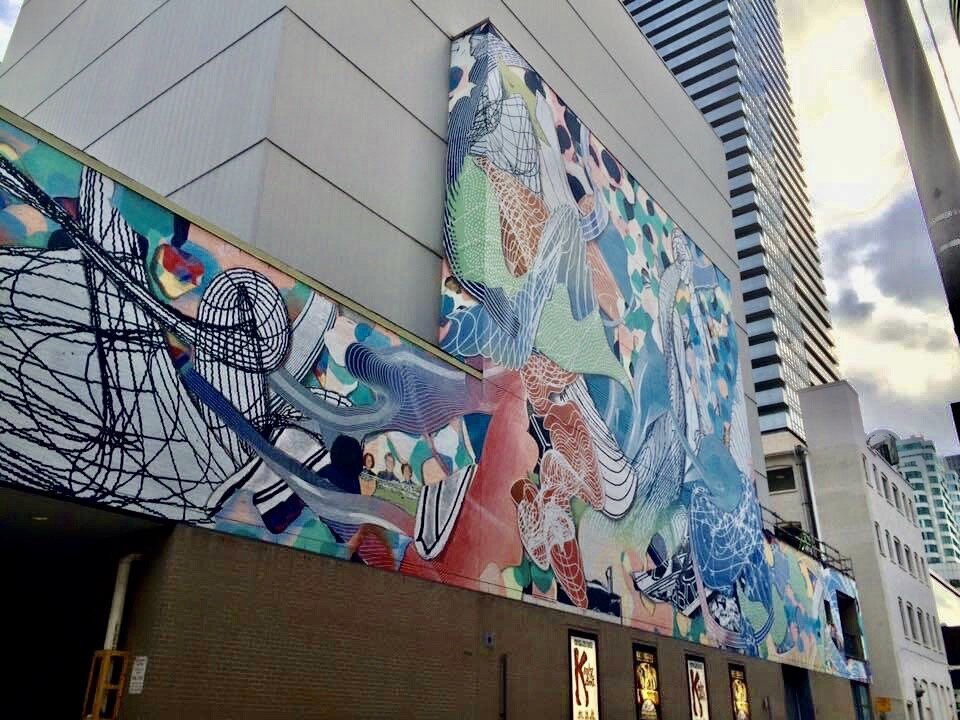
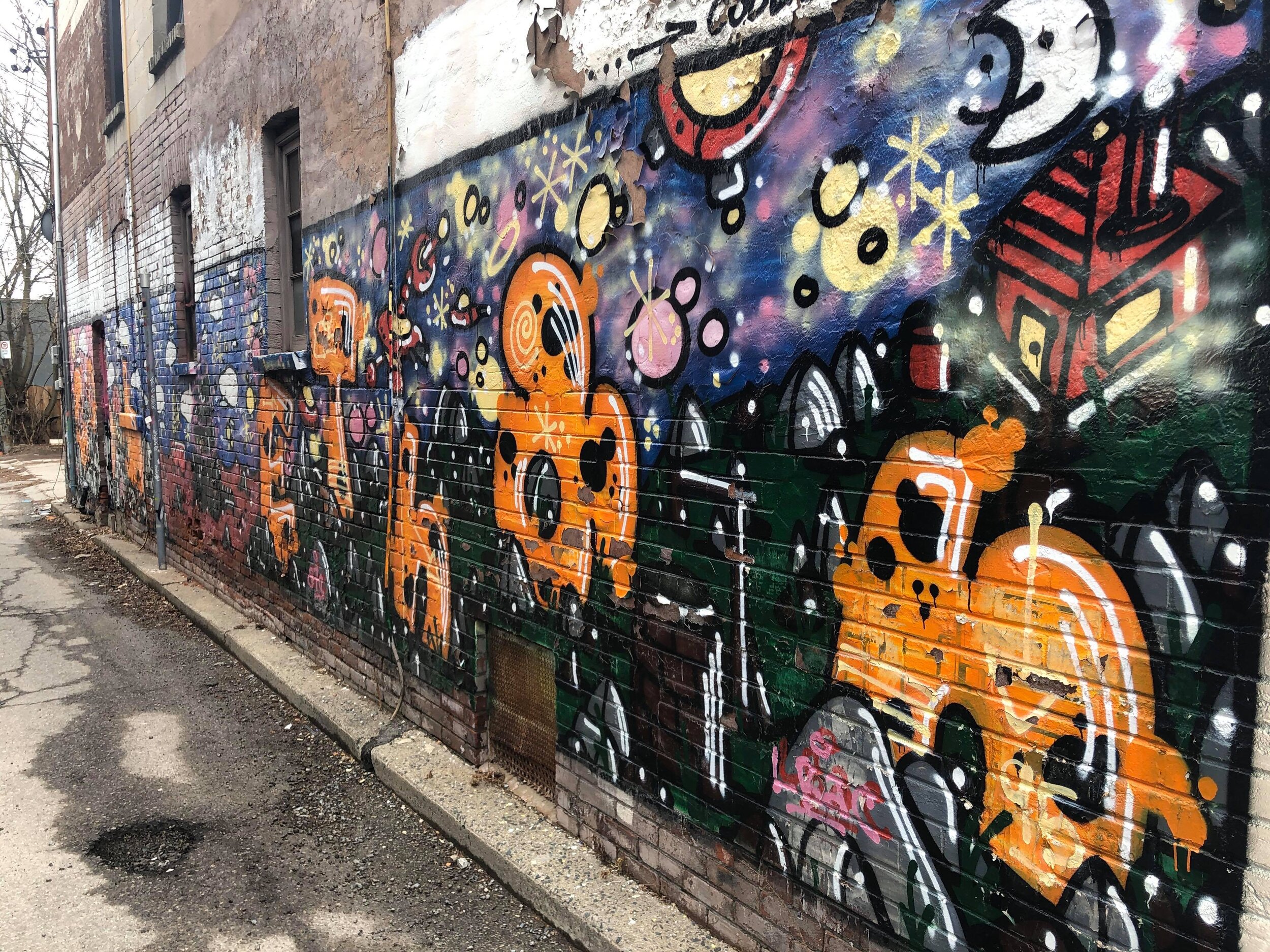
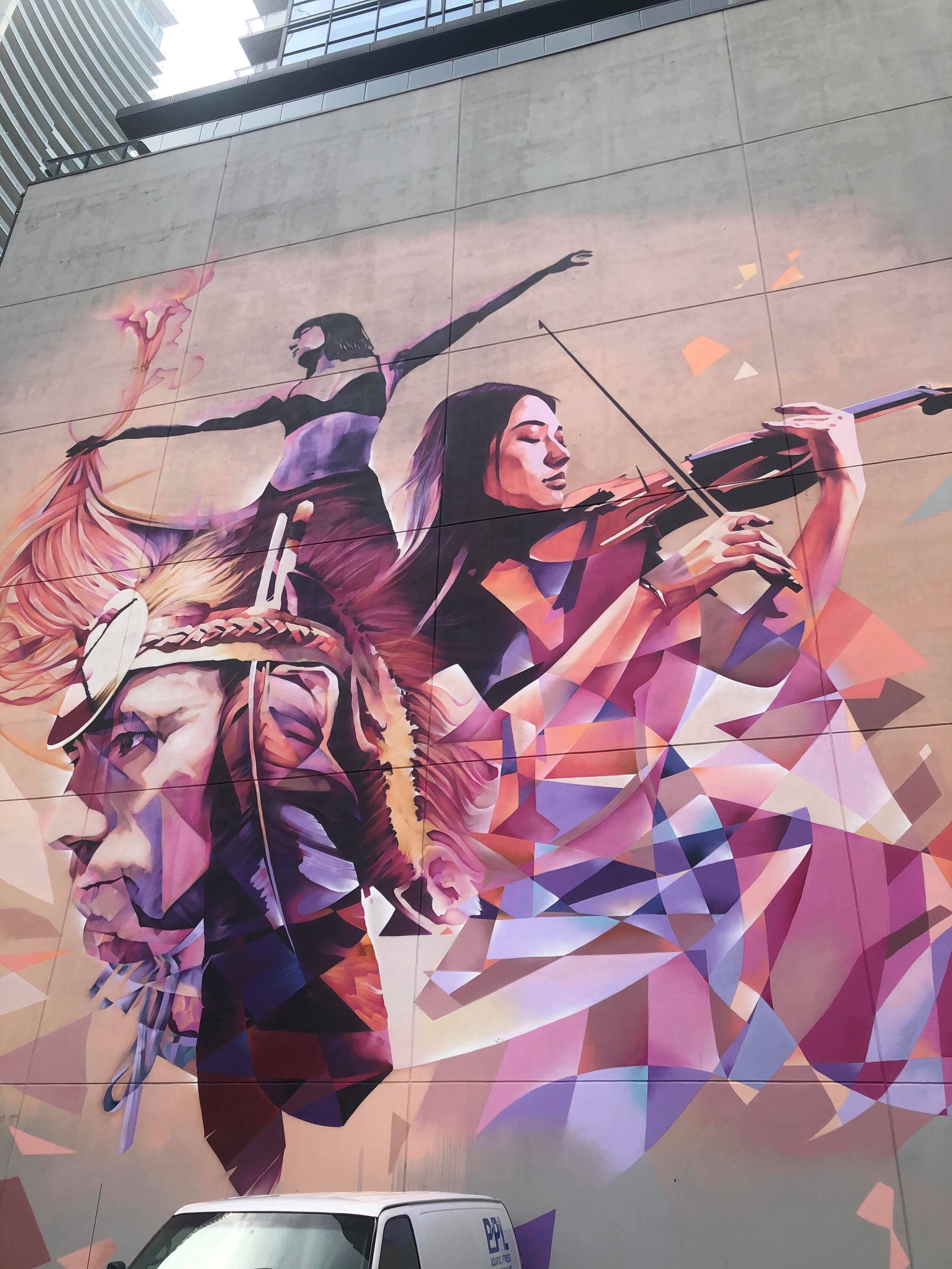
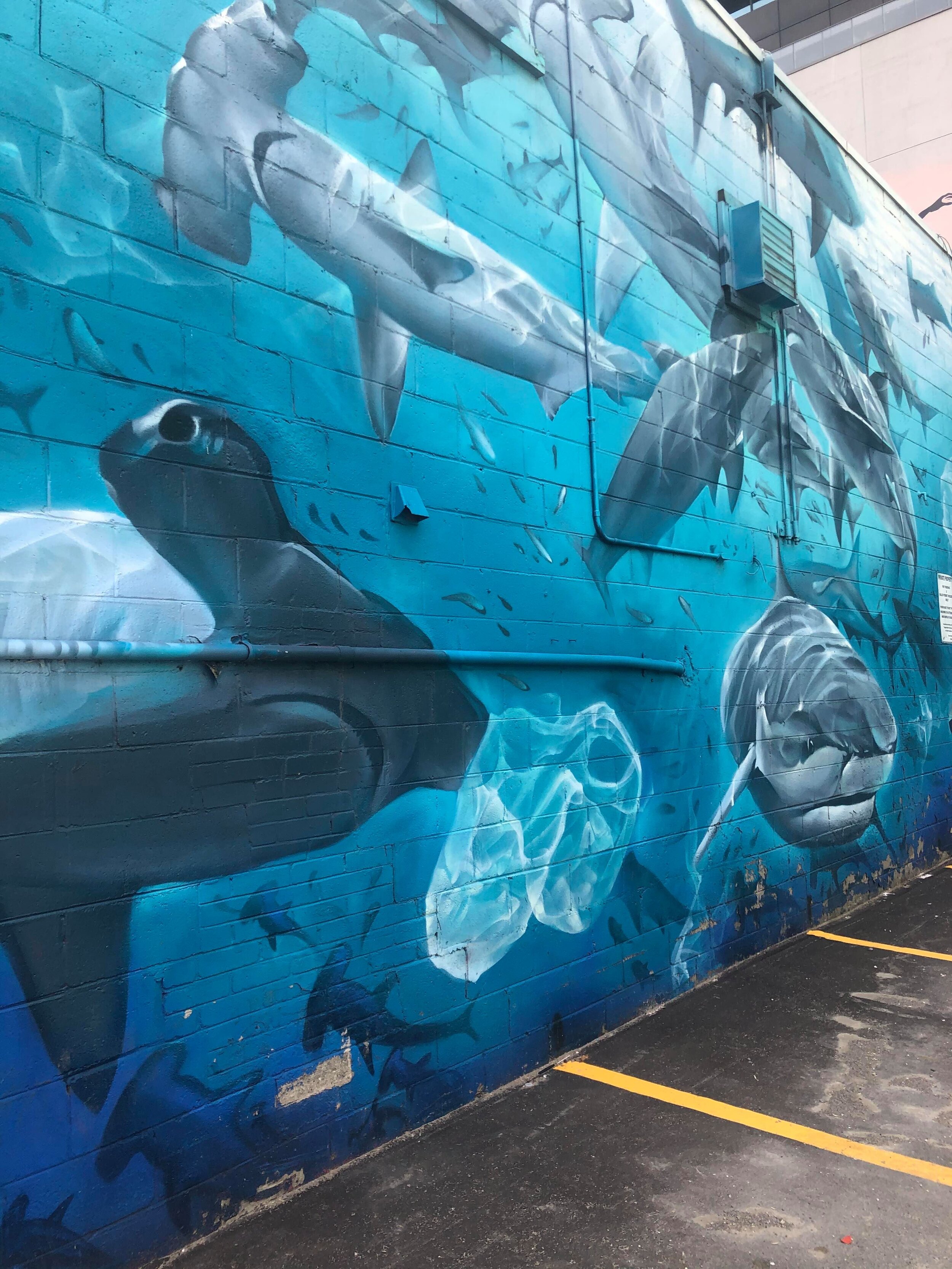
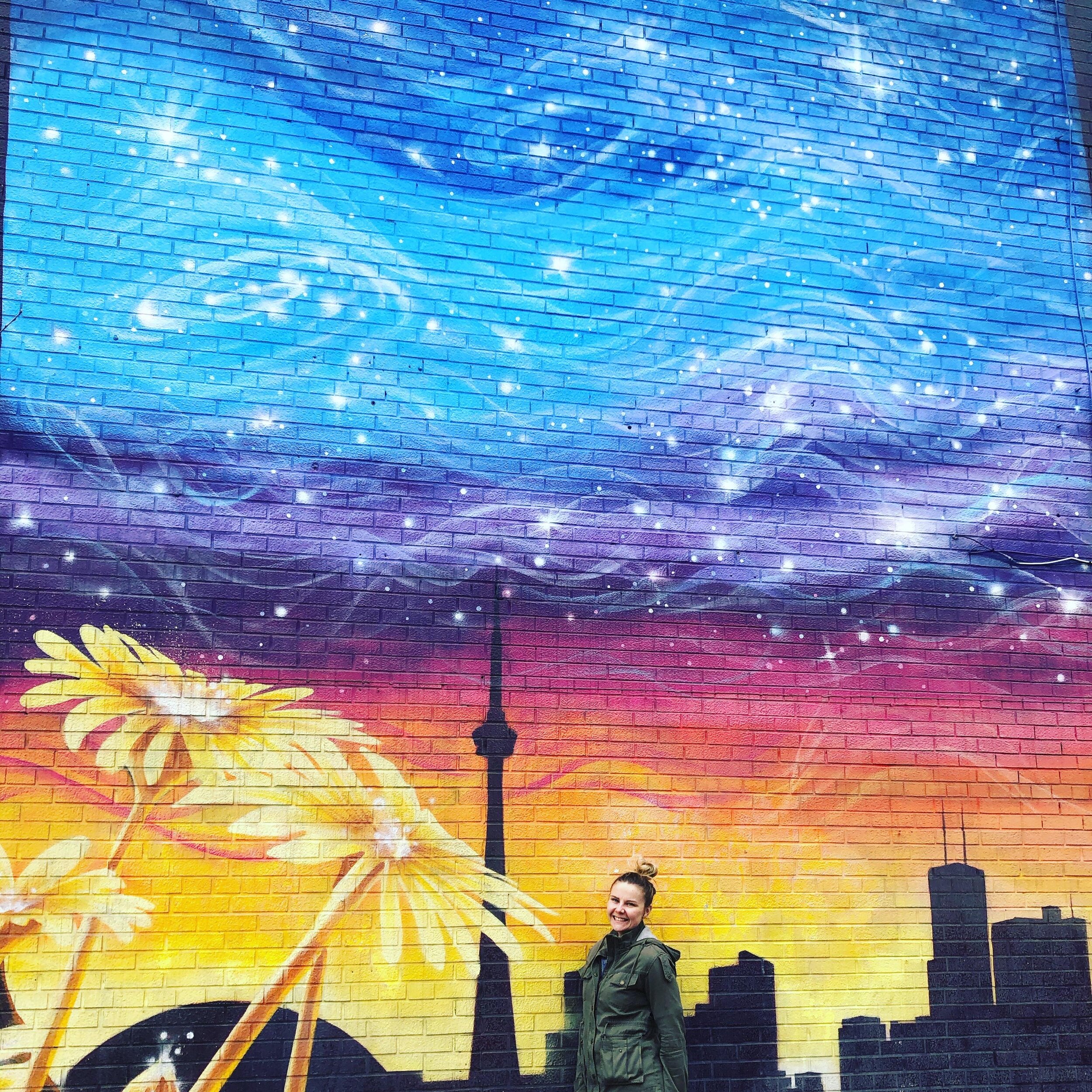
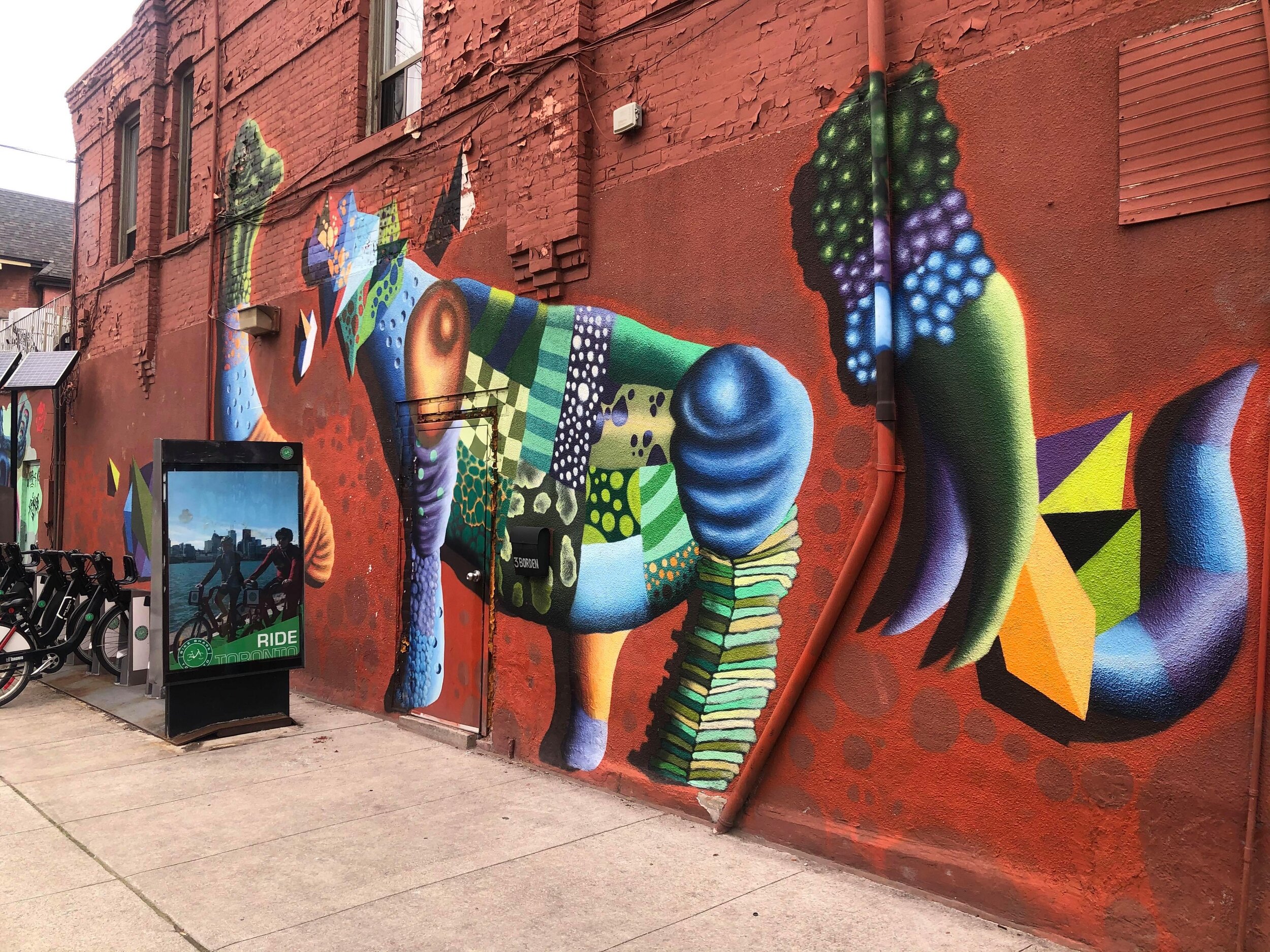
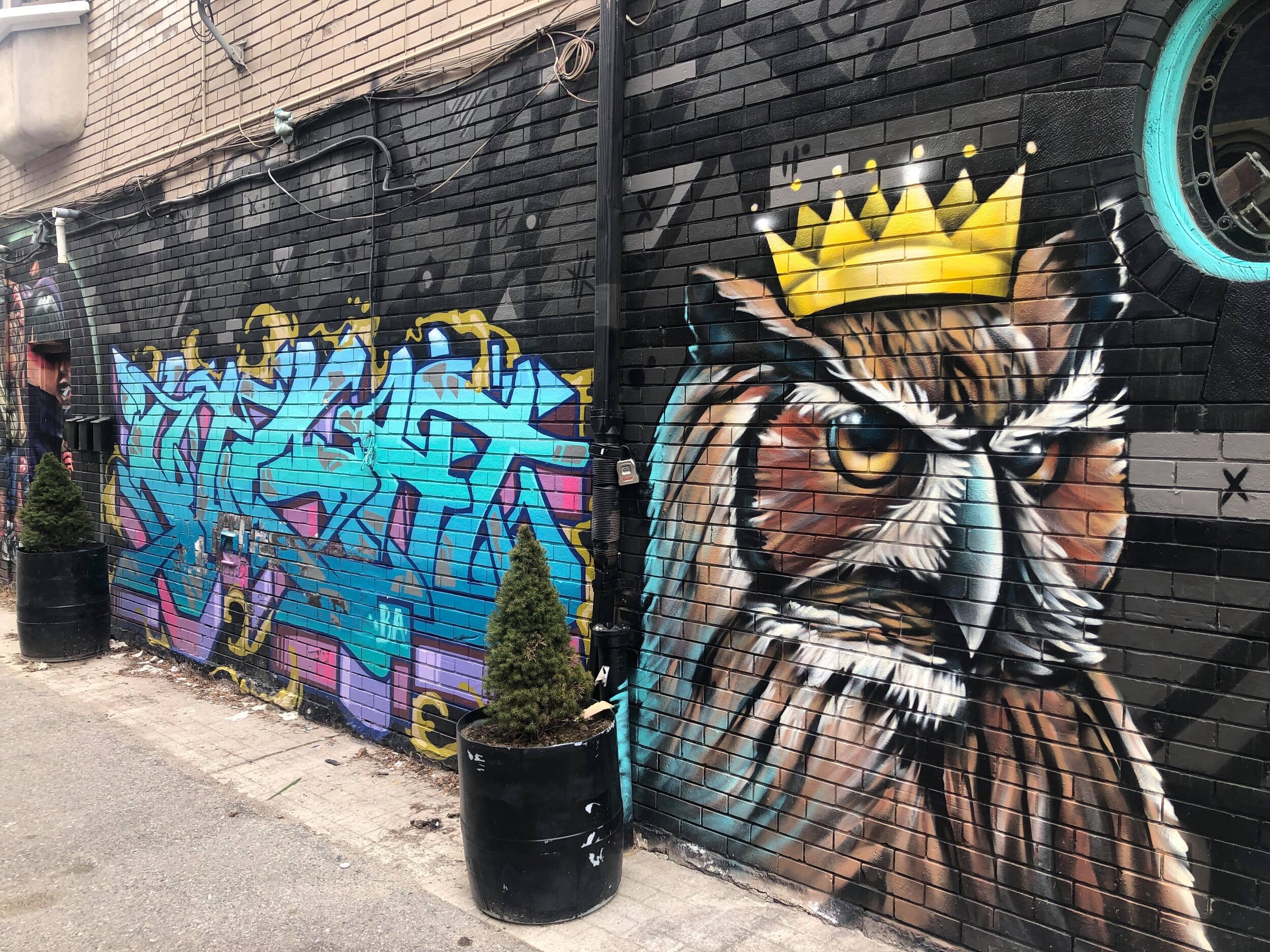


When I used to envision Toronto before I moved here from Australia in 2017, I predominately pictured snow-covered streets and the ever so famous, CN Tower standing proudly above the city skyline.
What I did not expect to see scattered ever so generously throughout Canada’s largest city was the wide array of street art that adorns a majority of the streets and laneways throughout Toronto’s 200-plus neighborhoods.
What makes each piece of art more beautiful is that each mural is unique to the area in which it resides. From Chinatown to Greektown and as far as Little Italy and Korea Town, every mini cultural hub has graffiti that tells a story of individuals, families, and the community as a whole.
The vast graffiti presence in Toronto is largely due to the 2012 initiative, StreetARToronto. This program was introduced to both reduce illegal graffiti and as a way to showcase local and international artists. The innovative art program aims to represent each individual cultural and geographical community in Toronto, as well as encourage locals to be active by making Toronto streets more vibrant and inviting to exercise in.
The most famous spot in Toronto to see graffiti is the amply named, Graffiti Alley. Lying just off Queen Street West in the downtown core, lies a plethora of modern graffiti art. The art that lines the (somewhat dingy) back alley makes for the perfect spot for one to digitally document their visit to Toronto.
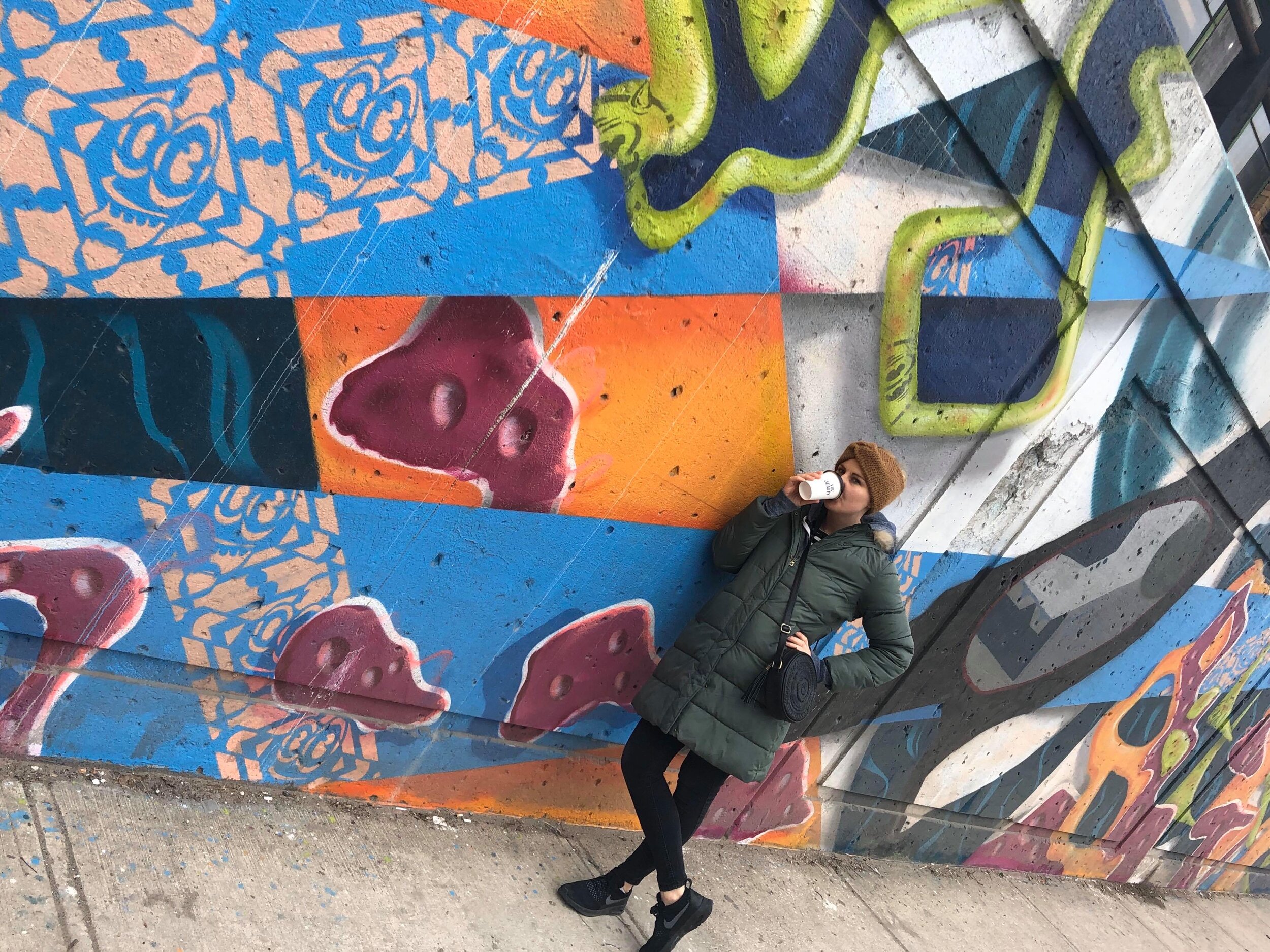
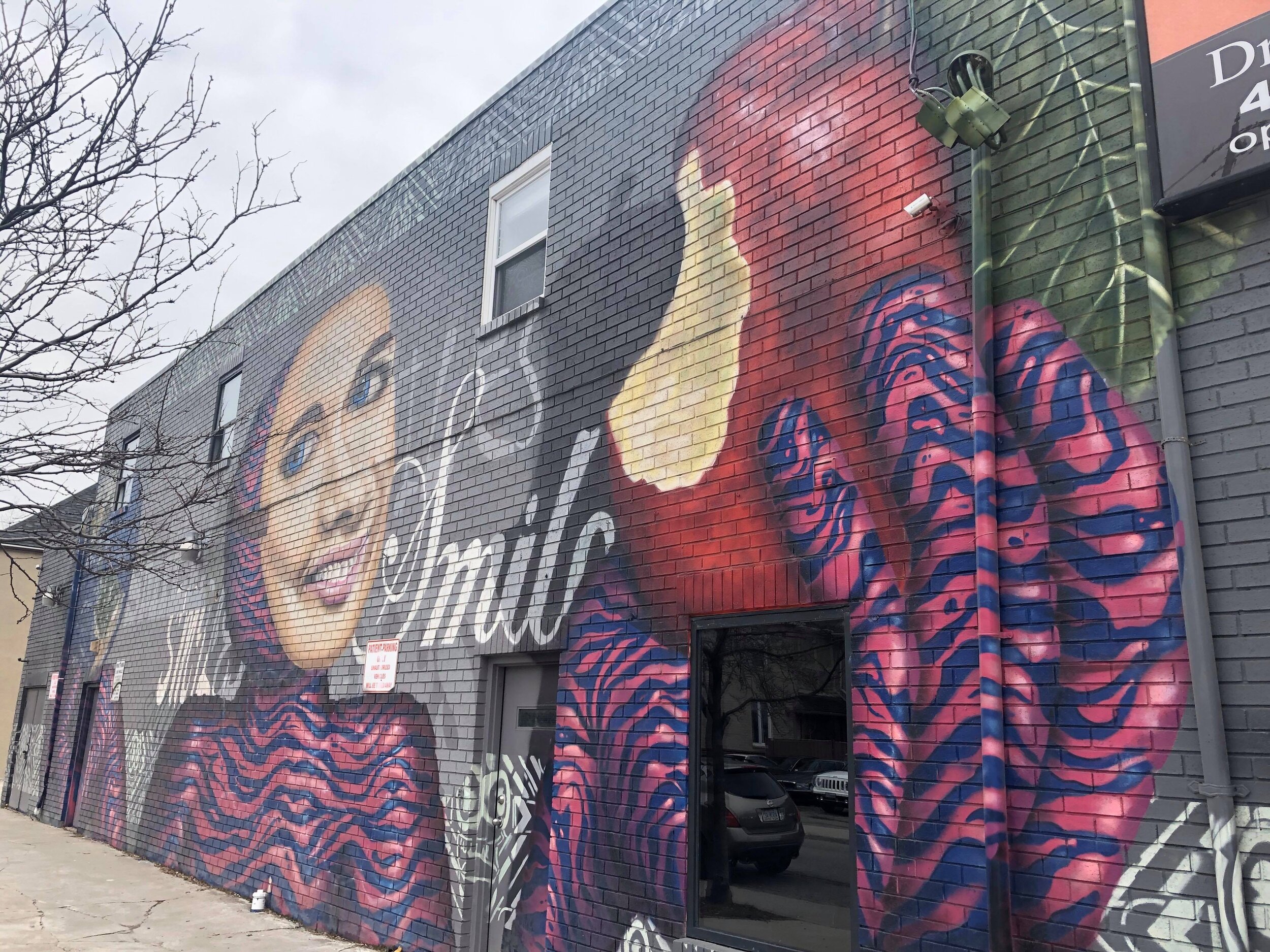
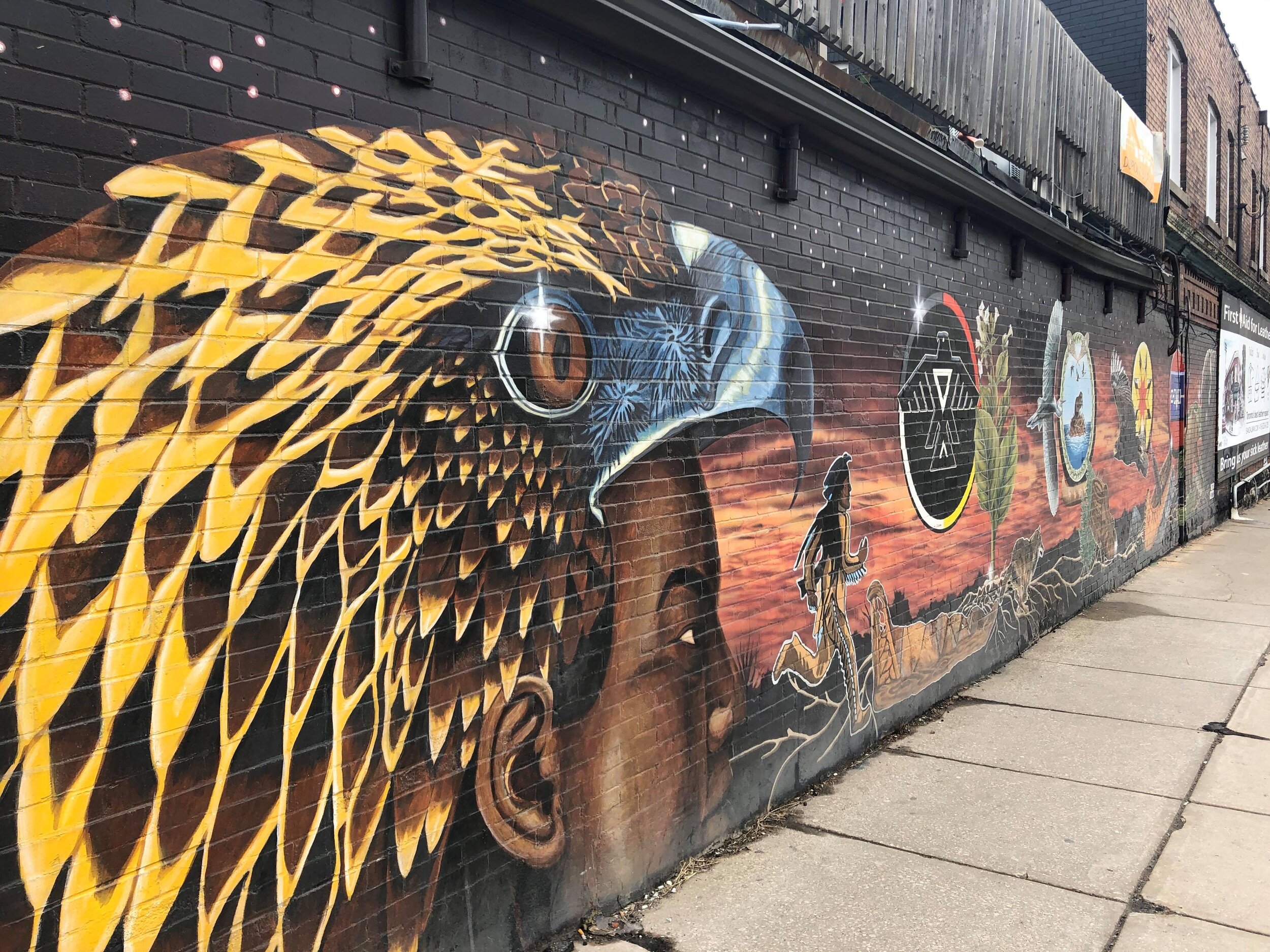
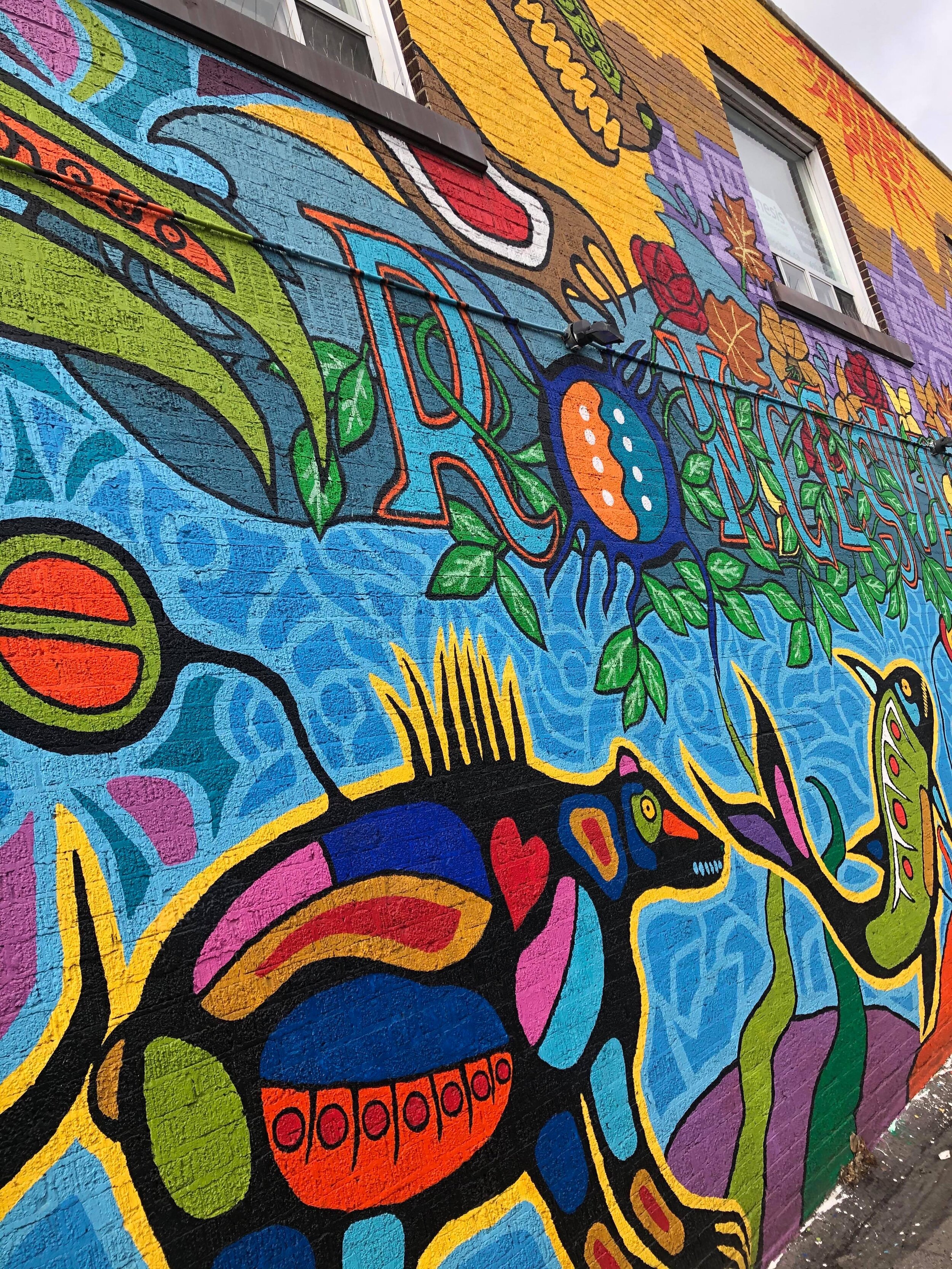
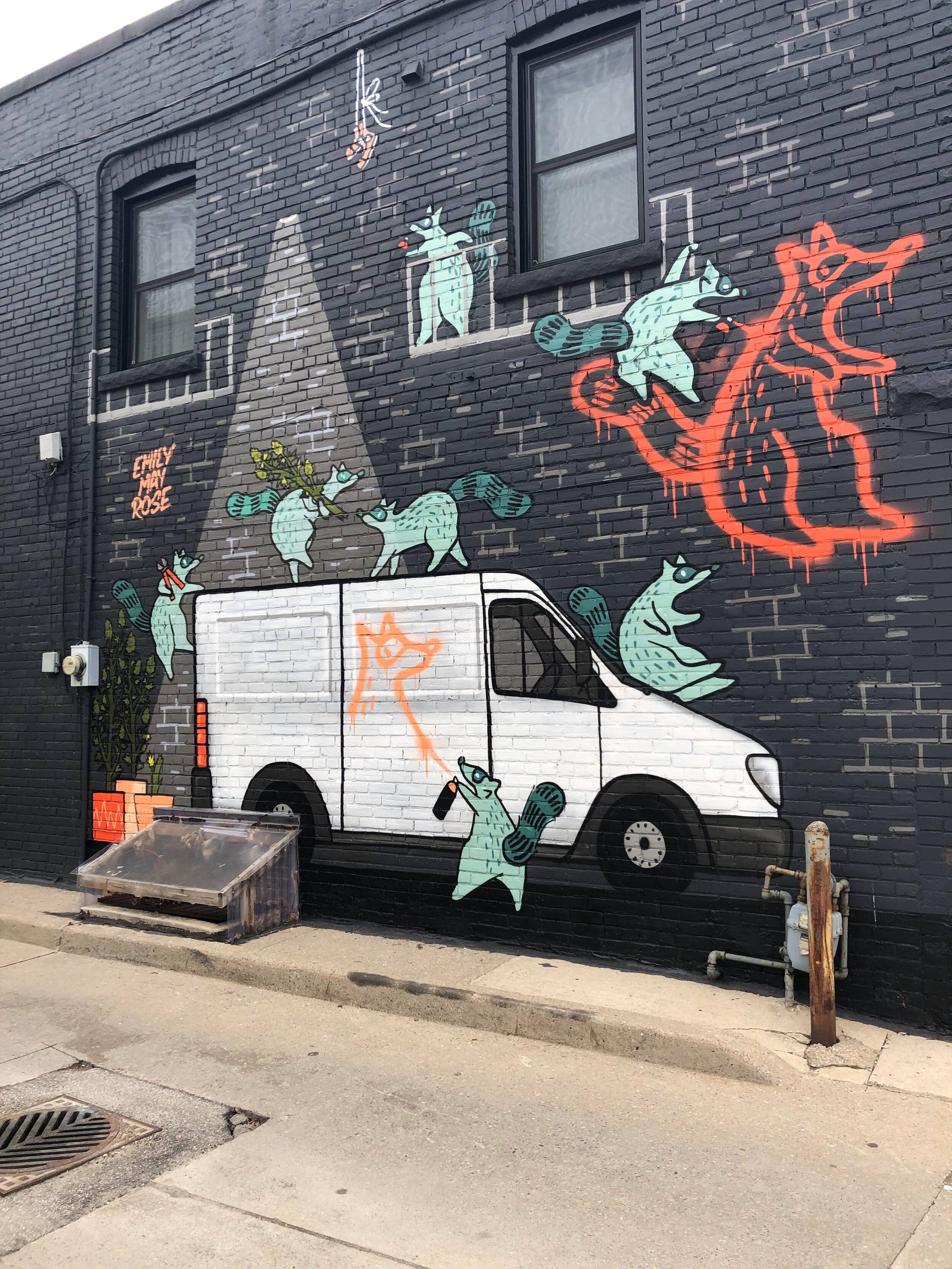
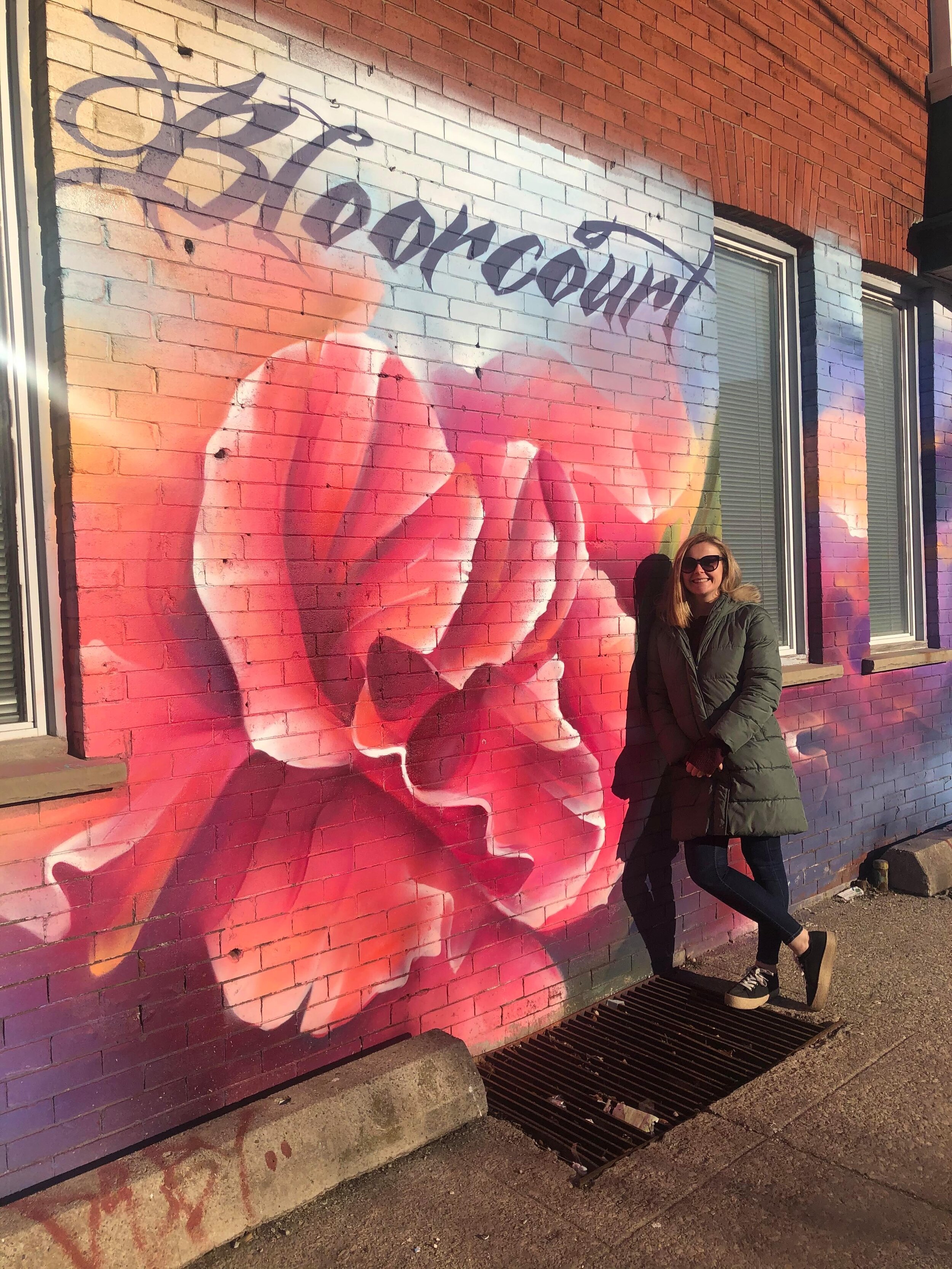

Other popular hubs to see the ever so popular street art include the eclectic Kensington Markets and The Ossington Strip in Toronto’s west end.
Although the above works of art are a site to see, I often enjoy the hidden gems that I spontaneously come across on my daily Toronto explorations more.
There is something so mesmerizing about discovering a piece of art that so accurately encompasses the area that you’re in, without being a mass tourist spot.
I regularly stumble across a piece of art that causes me to instantly feel thankful that I took a different street and explored a new area.
I’m currently three years down in Toronto with hundreds of graffiti sightings under my belt. I have complete faith that I will continue to discover more of the bright and inviting art that thousands fall in love with each year as my journey in Toronto continues.
Follow Chelsea’s journey as an Expat in Canada here. Be sure to follow her on Instagram and Facebook as well to keep up to date with her journeys in Canada. CLICK HERE to read about Chelsea’s Top Toronto Attractions.
5. Melbourne, Australia
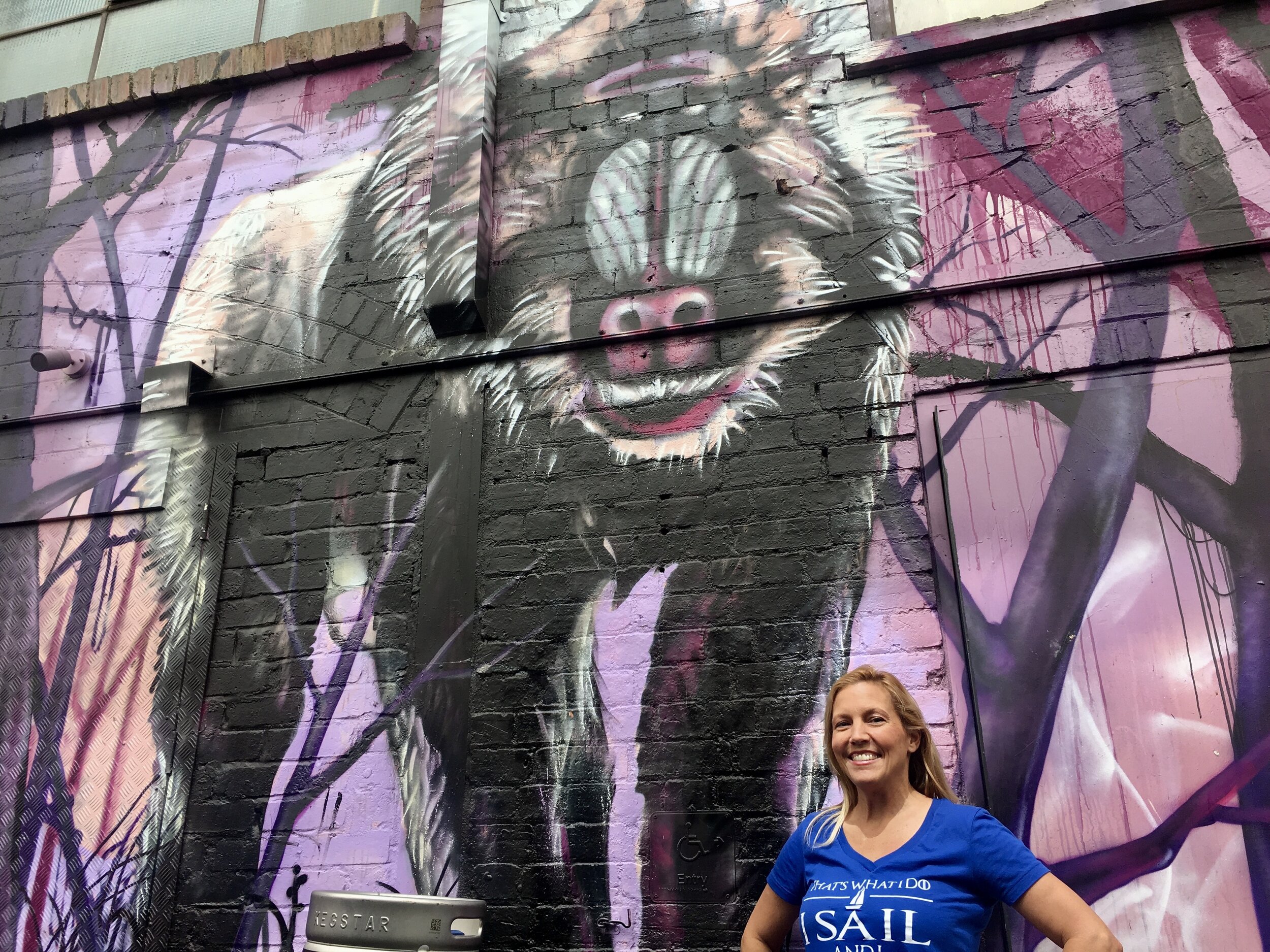
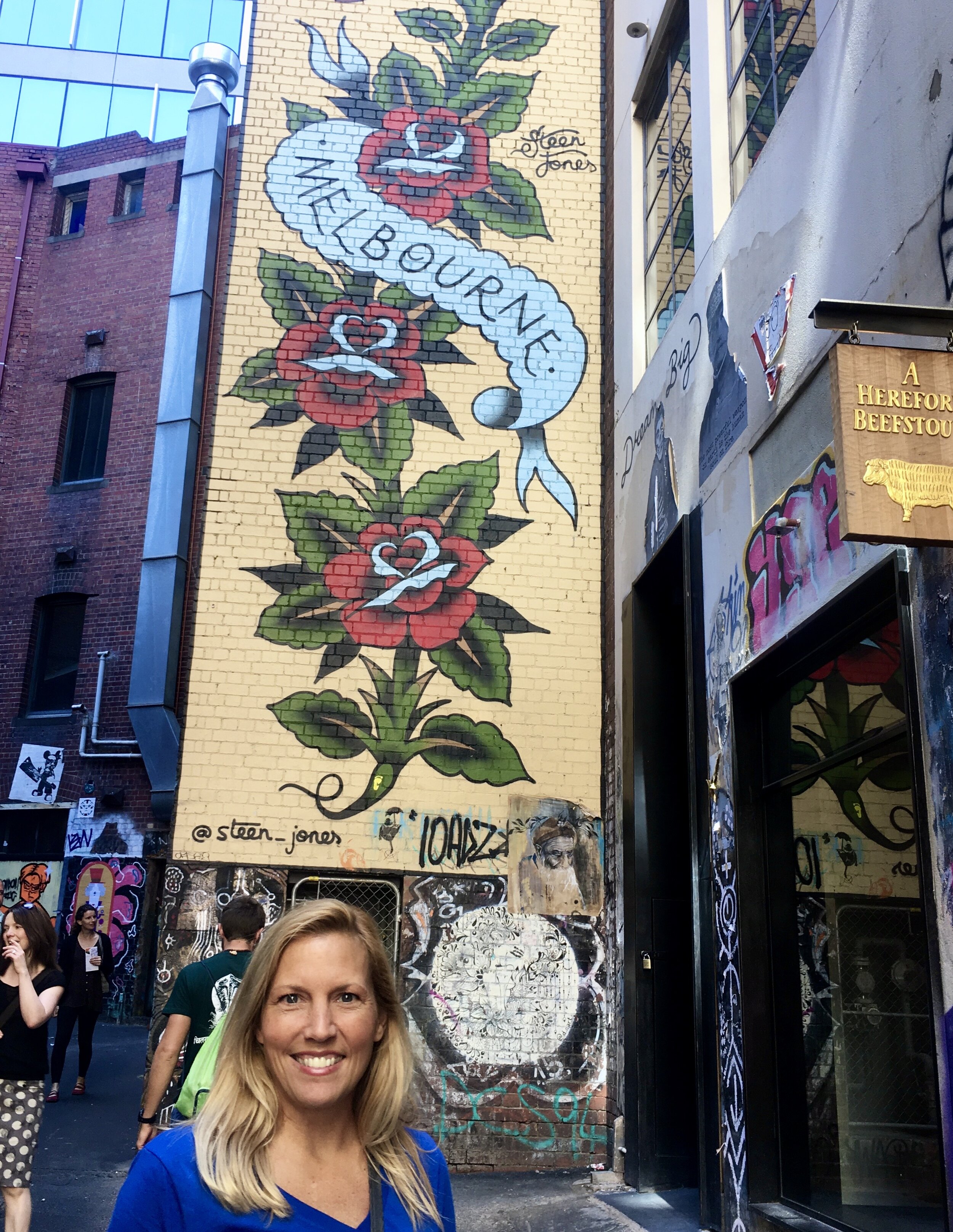
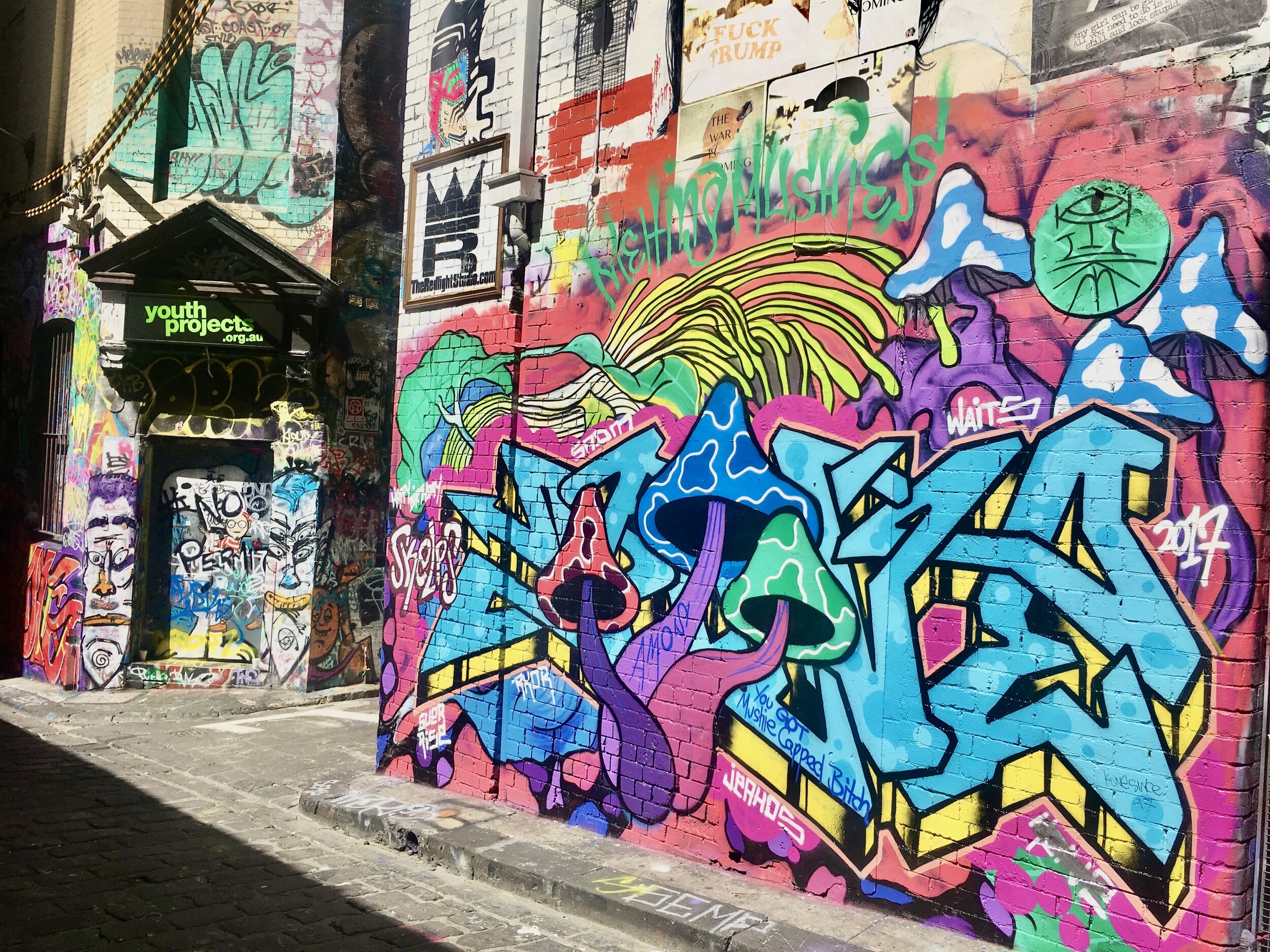
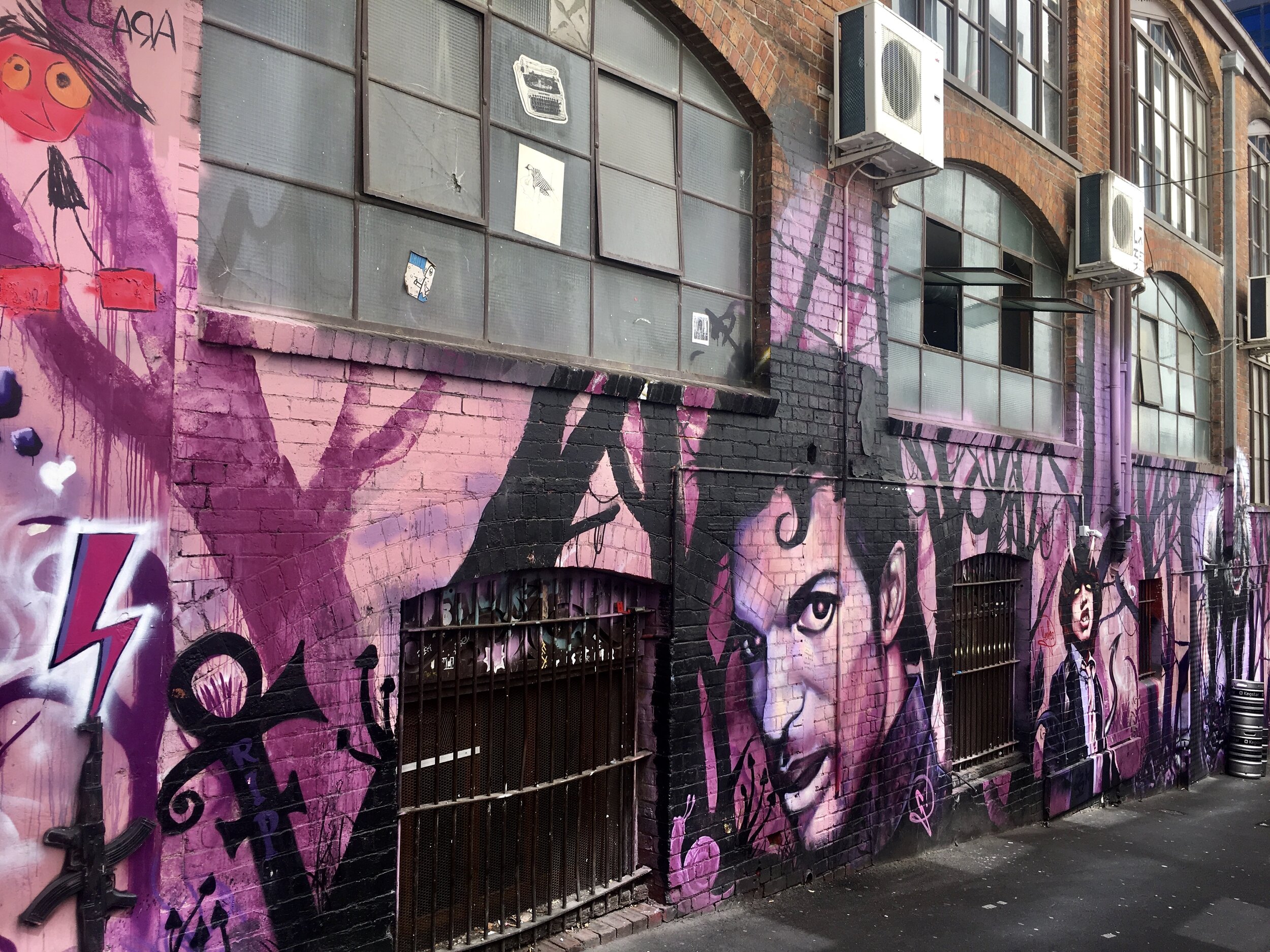
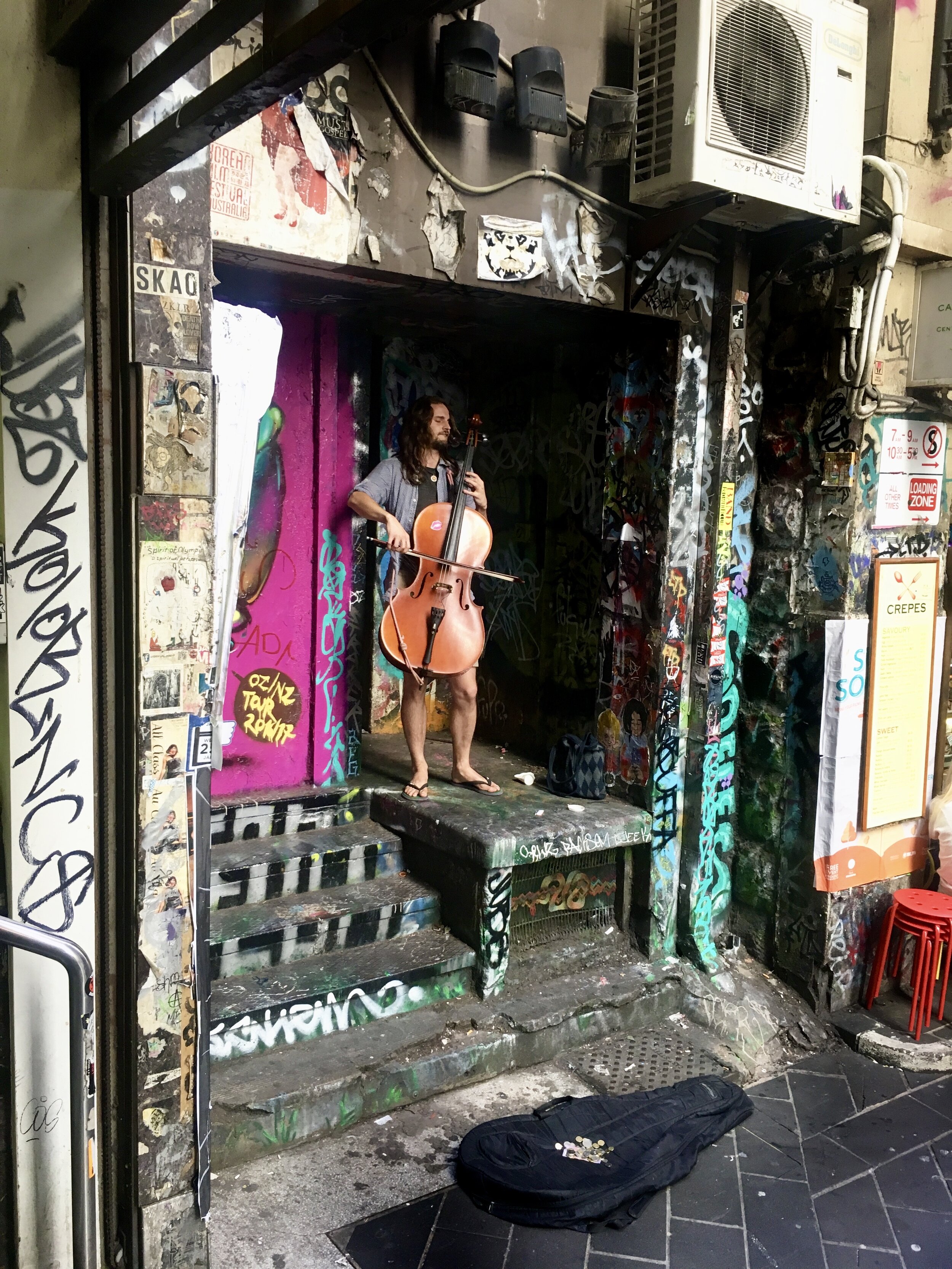
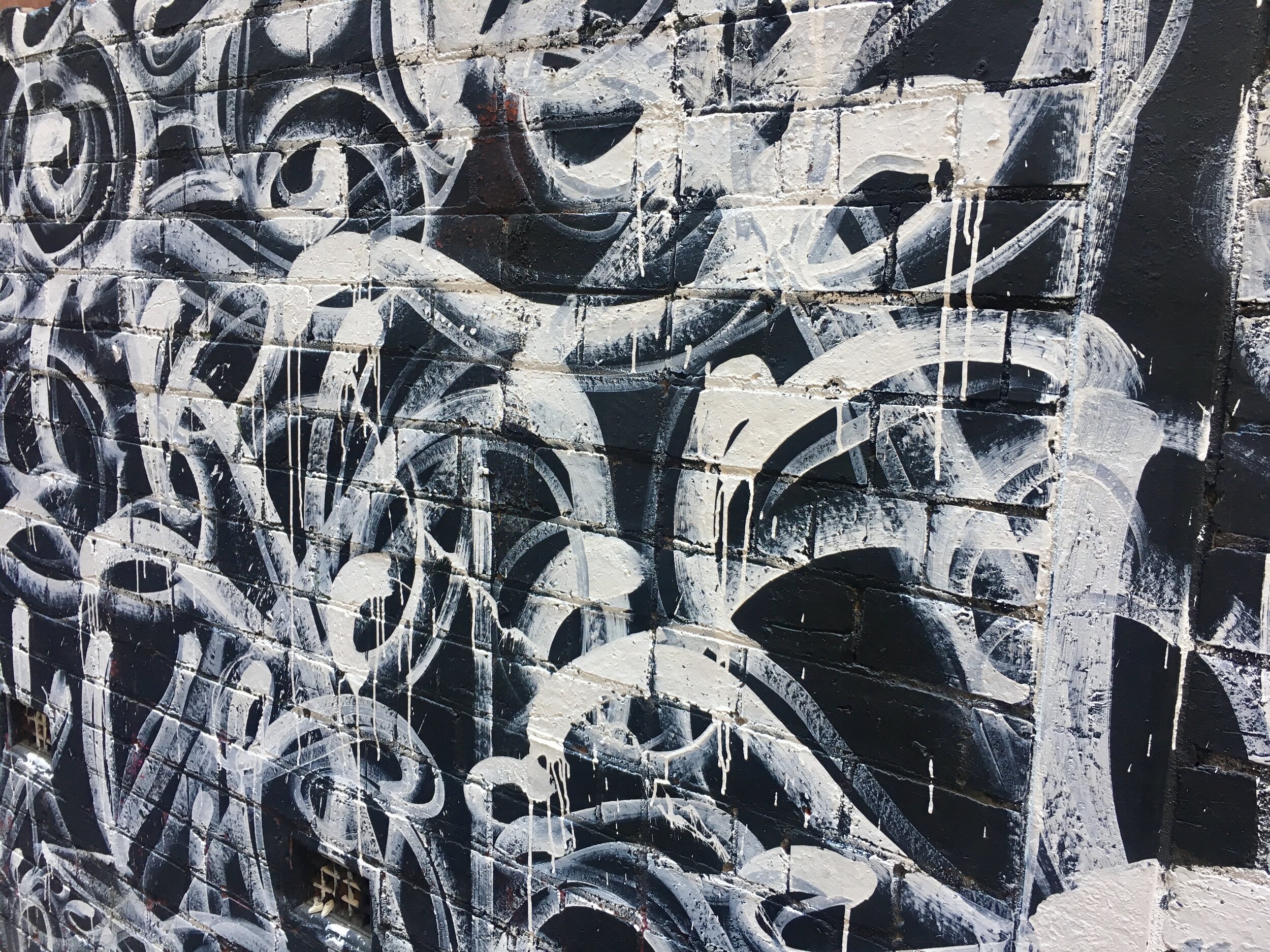
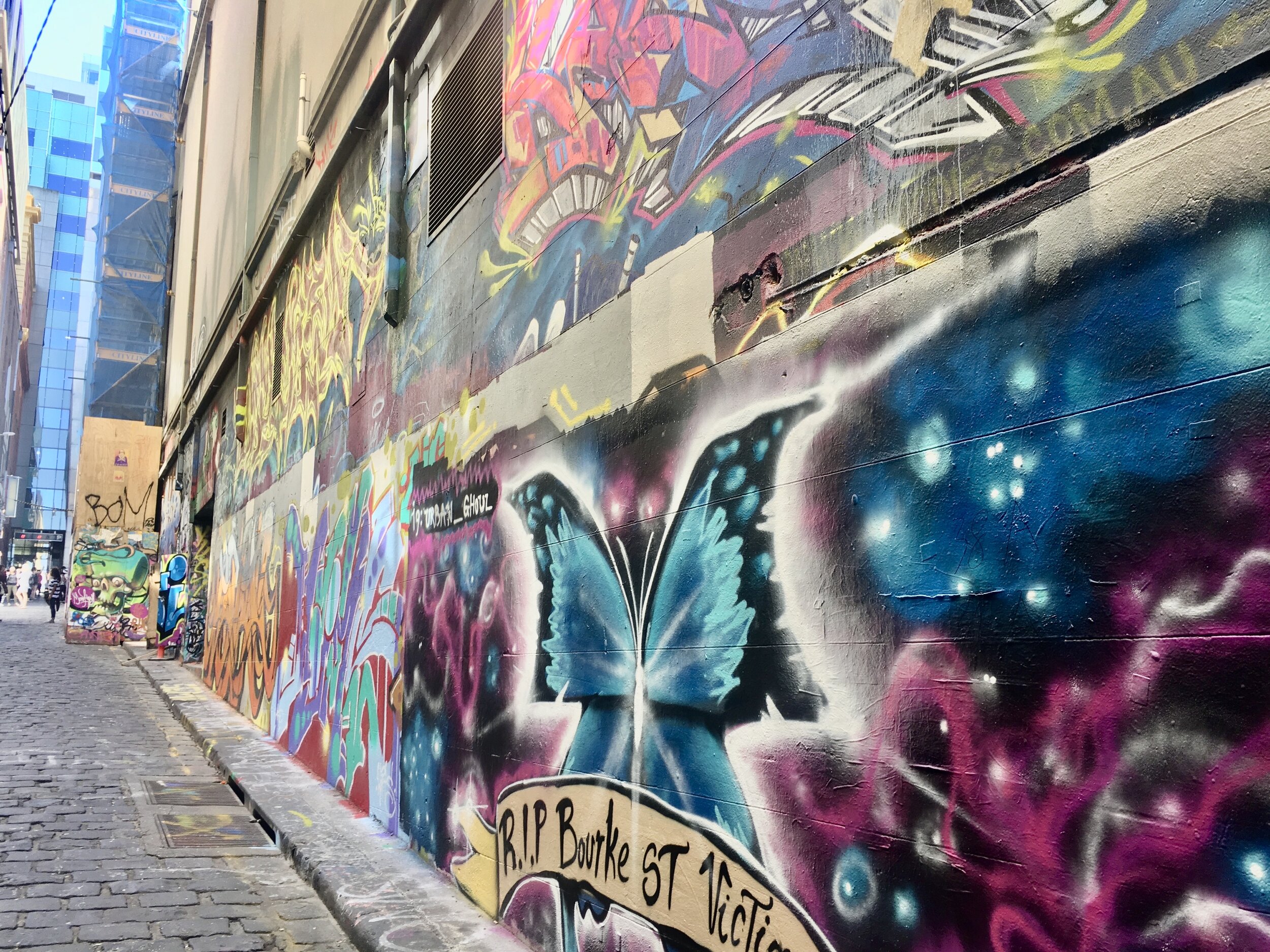
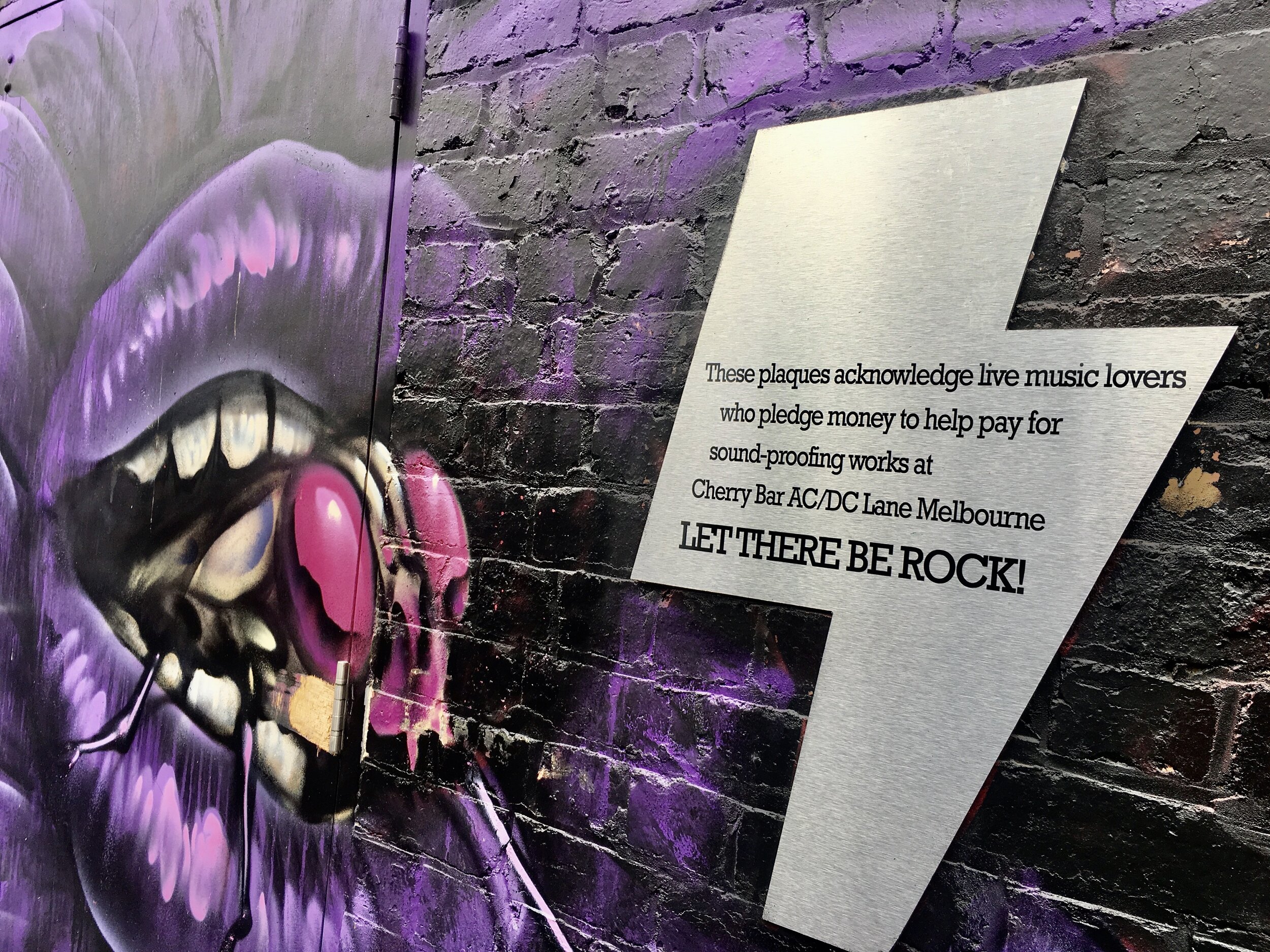
When I think of my three-day trip to Melbourne two things stand out in my mind. The first is The Australian Open, the fourth of four tennis grand slams that I attended to check off a bucket list item that took 10 years to complete. That was the main reason I ventured down under for a journey in which I spent more time in the air than I did on the ground. As expected, it was awesome.
But I found a most amazing and unexpected surprise while venturing downtown. Melbourne is literally covered in art—a spectacular open-air art museum. Some areas have stronger clusters of graffiti and street art than others, but trust me, it’s everywhere.
There are several places in Melbourne to see fantastic street art. I especially loved AC/DC Lane, which is just what the name implies—an artistic tribute to the iconic Australian rock band. But it’s much more than that. It features all kinds of musicians, both living on the streets and memorialized on the walls. It’s also home to the legendary music venue, Cherry Bar.
As you walk through the streets there is a fun surprise around every corner. It doesn’t matter if you don’t appreciate art, there is something for everyone, and I guarantee you will overdose on stimulation and color variations you didn’t even know existed before. Take your time walking through because it can be a bit overwhelming, but most definitely a worthwhile and significant spot for unique graffiti and street art.
6. Inga Stone—Ingá, Brazil

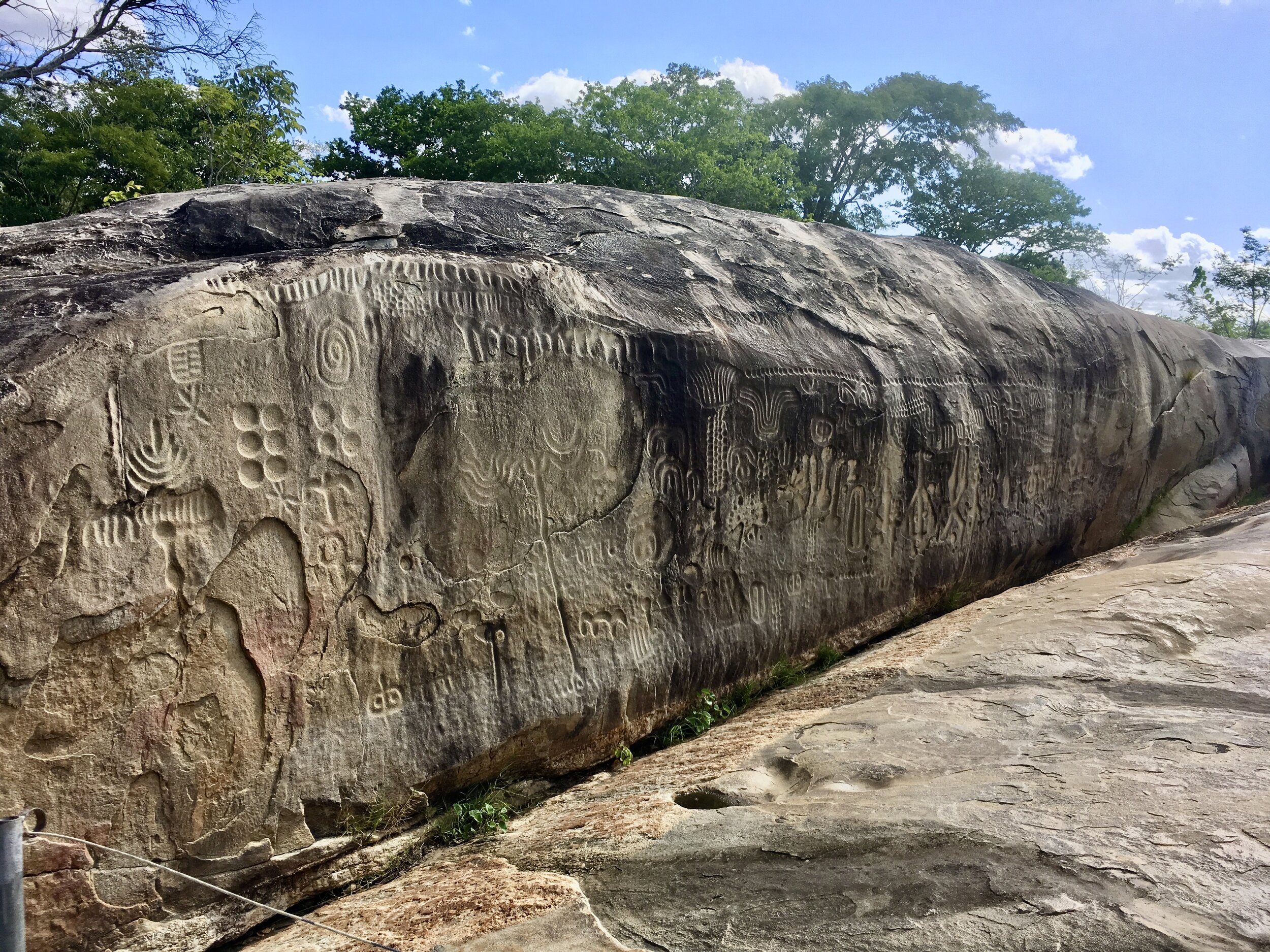
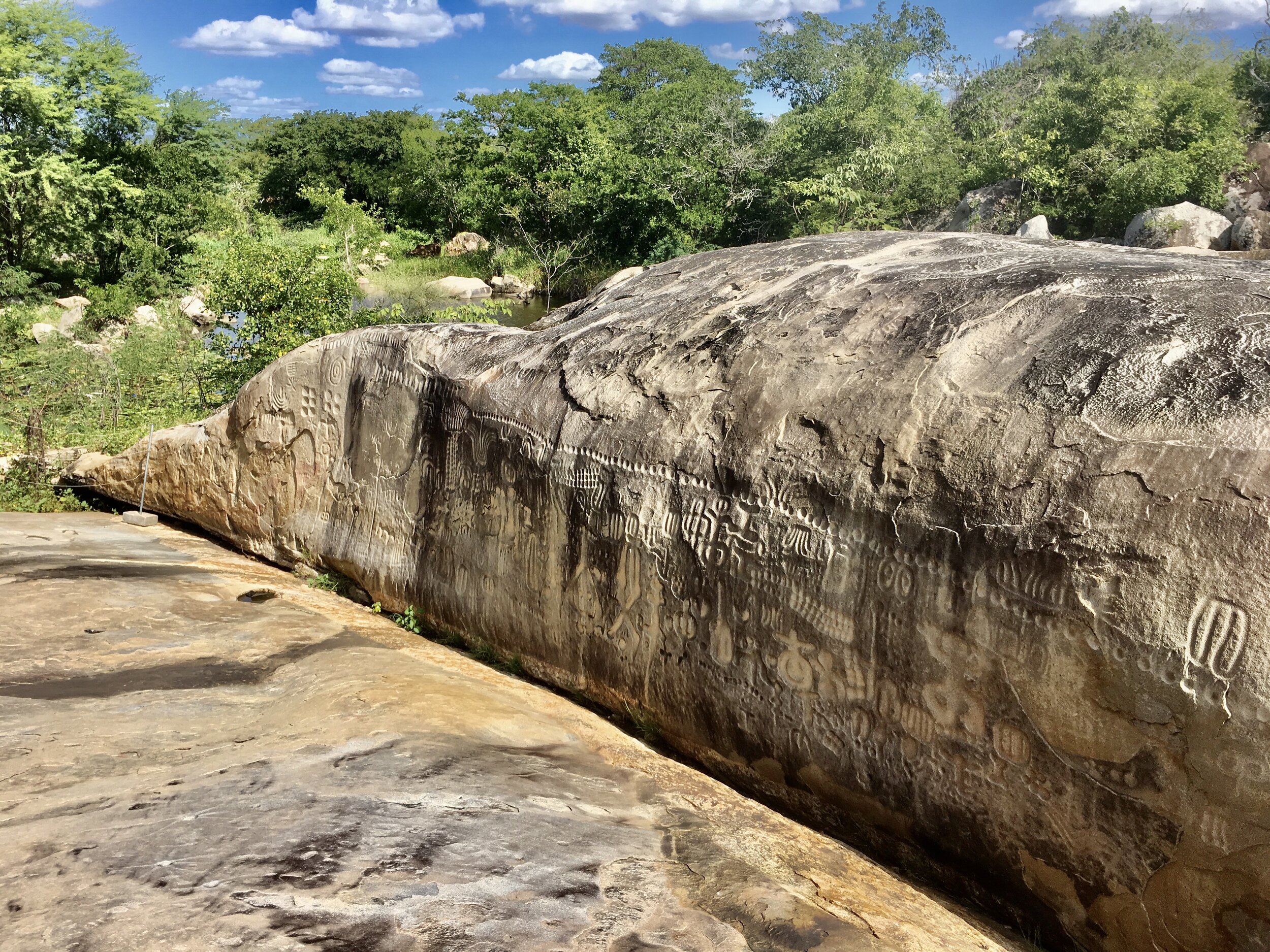

If you ever wondered what graffiti looked like 6,000 years ago, drive about two hours from Cabedelo, Brazil to find the famous Ingá Stone.
Way off the beaten path, the Ingá Stone (Pedra do Ingá in Portuguese) is located in the middle of the Ingá River near the small city of Ingá, about 96 km from Joāo Passoa, in Paraiba State in the northeast of Brazil.
The Ingá Stone is also called Itacoatiara do Ingá. It is a rock formation in gneiss which covers an area of approximately 250 m² with entries whose meanings are unknown. Several figures are carved in low relief, suggesting the representation of animals, fruits, and constellations like Orion and Milky Way. It is composed of some basalt stones covered with symbols and glyphs which are undeciphered until now. Scholars think it was created a minimum of 6,000 years ago by natives that lived in the area until the 18th century.
7. Amalfi Coast, Italy
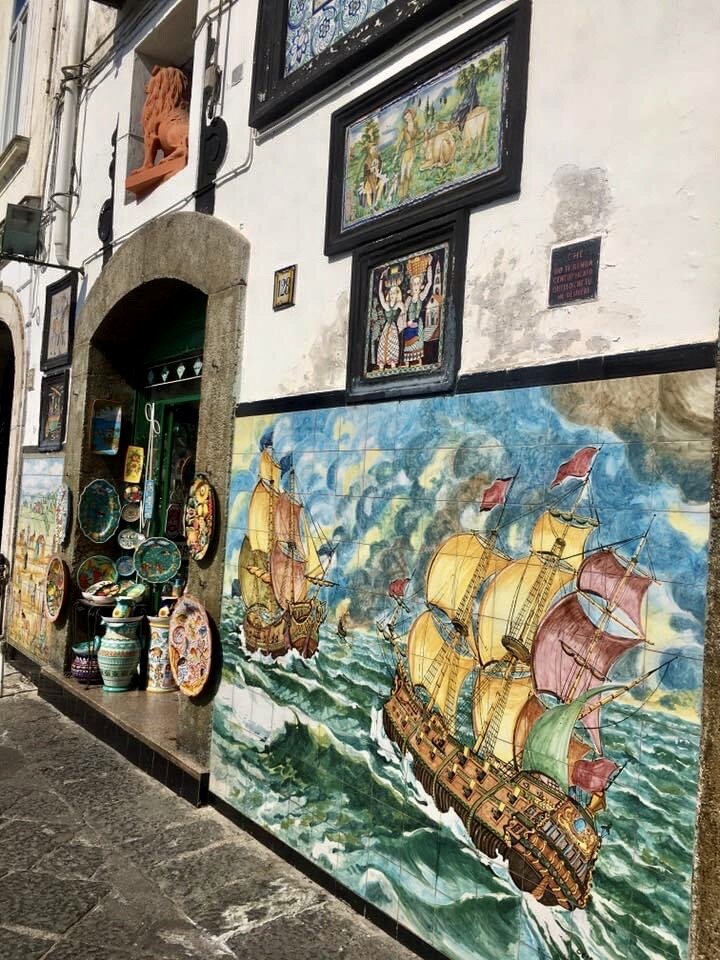
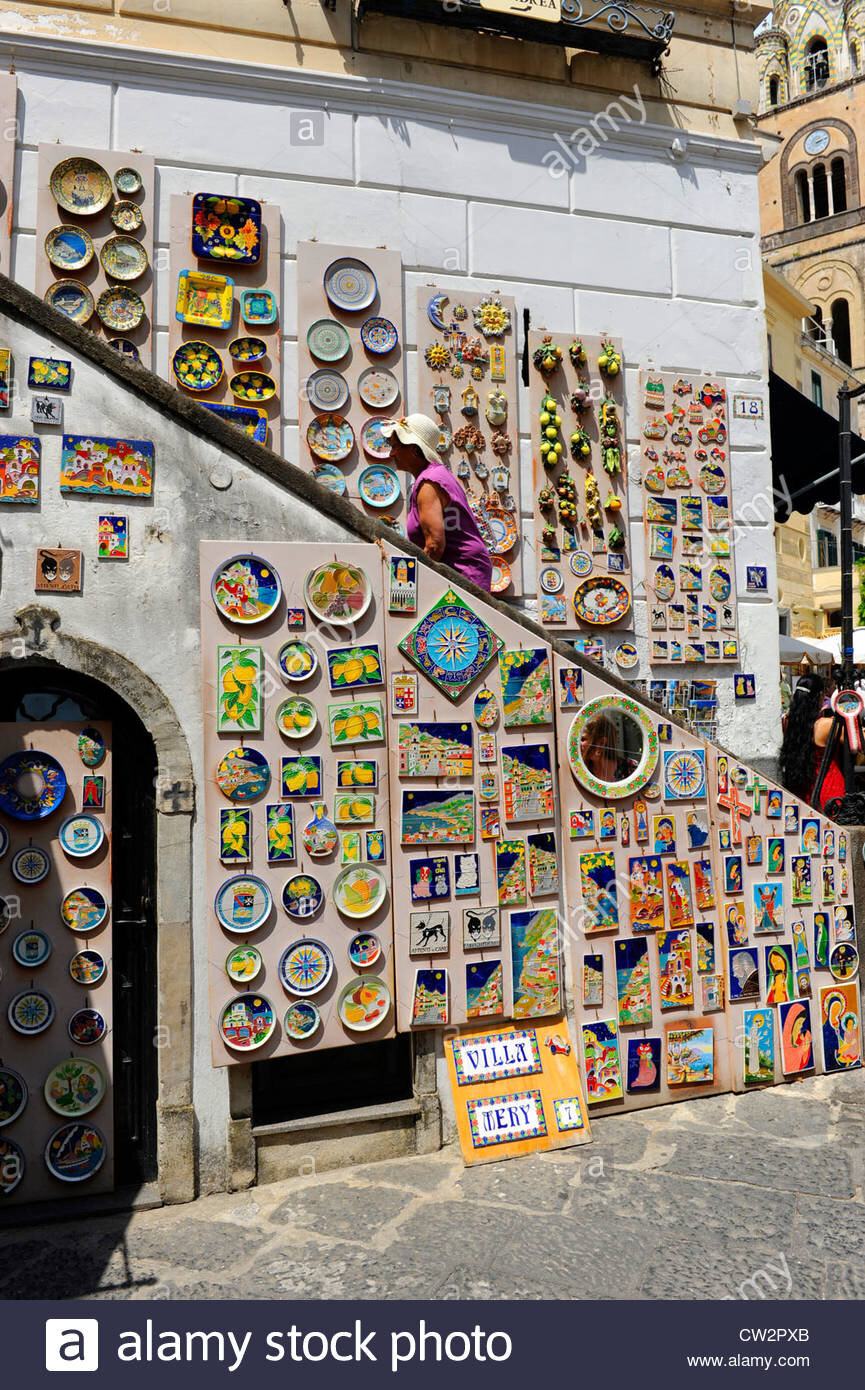
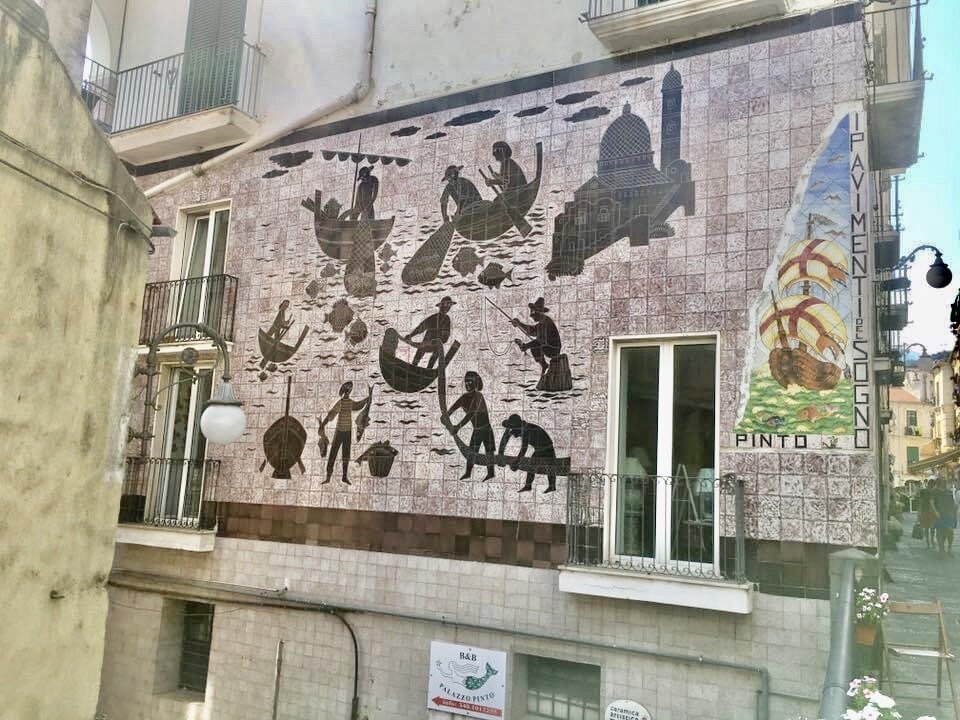
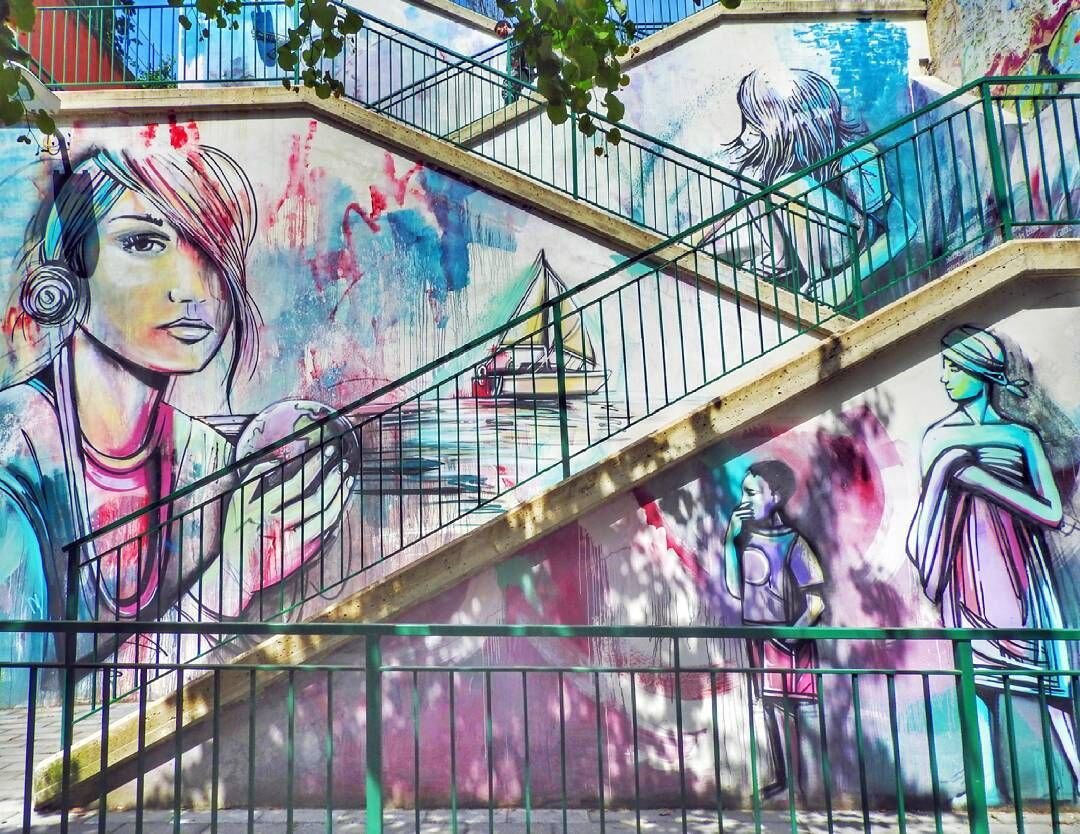
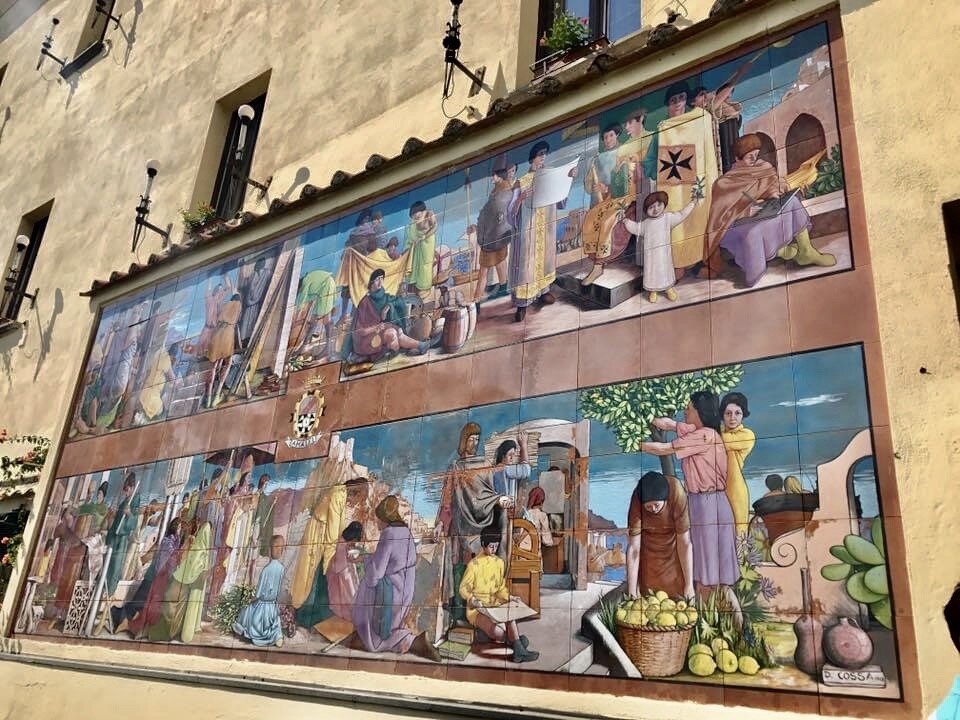
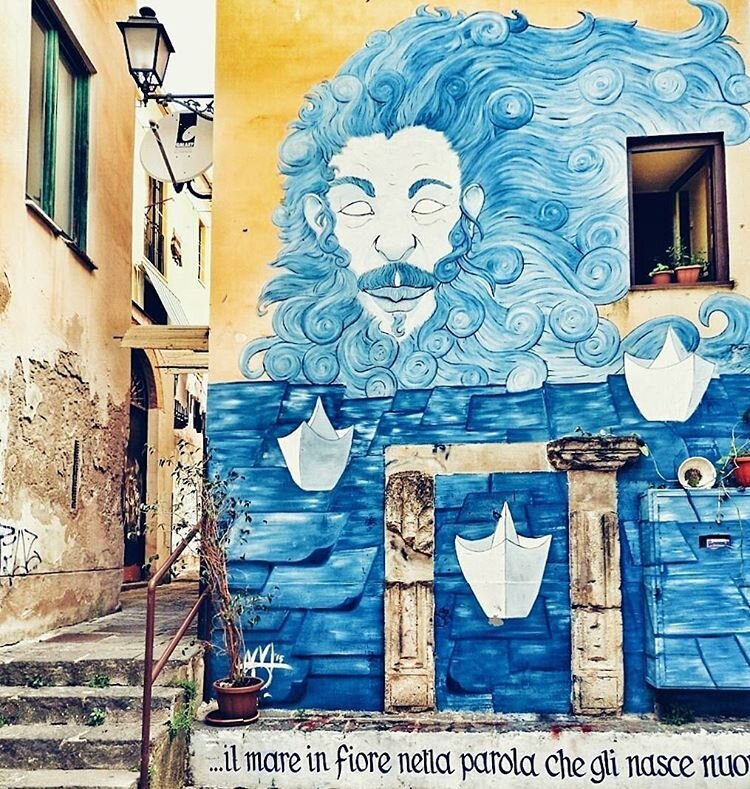
Almost as famous as the breathtaking scenery all along Amalfi’s brilliant coastline are its gorgeous towers of thousands of cliffside buildings in a rainbow of colors and various textures. A closer look shows even more unique street art adorned on the sides of most of the famous buildings of the Sorrentine Peninsula. The coast includes nearly 28,000 acres between the Gulf of Naples and the Gulf of Salerno.
The sweet little village of Vietri sul Mare in the province of Salerno is known for its polychrome ceramics and uses it to decorate the sides of many of the town’s buildings.
Much more street art using paint and pottery can be found while driving the exhilarating and sometimes terrifying 30-mile drive along the Amalfi Coast from Salerno to Sorrento. While the traffic jams caused by tour buses, motorcycles, and taxis along the ridiculously narrow zig-zag switchbacks are frustrating, you are rewarded with the gorgeous street art and spectacular views.
BONUS – 6 More Cool Places for Graffiti and Street Art
Ok, I guess I’m a graffiti junkie. I couldn’t resist sharing just a few more.
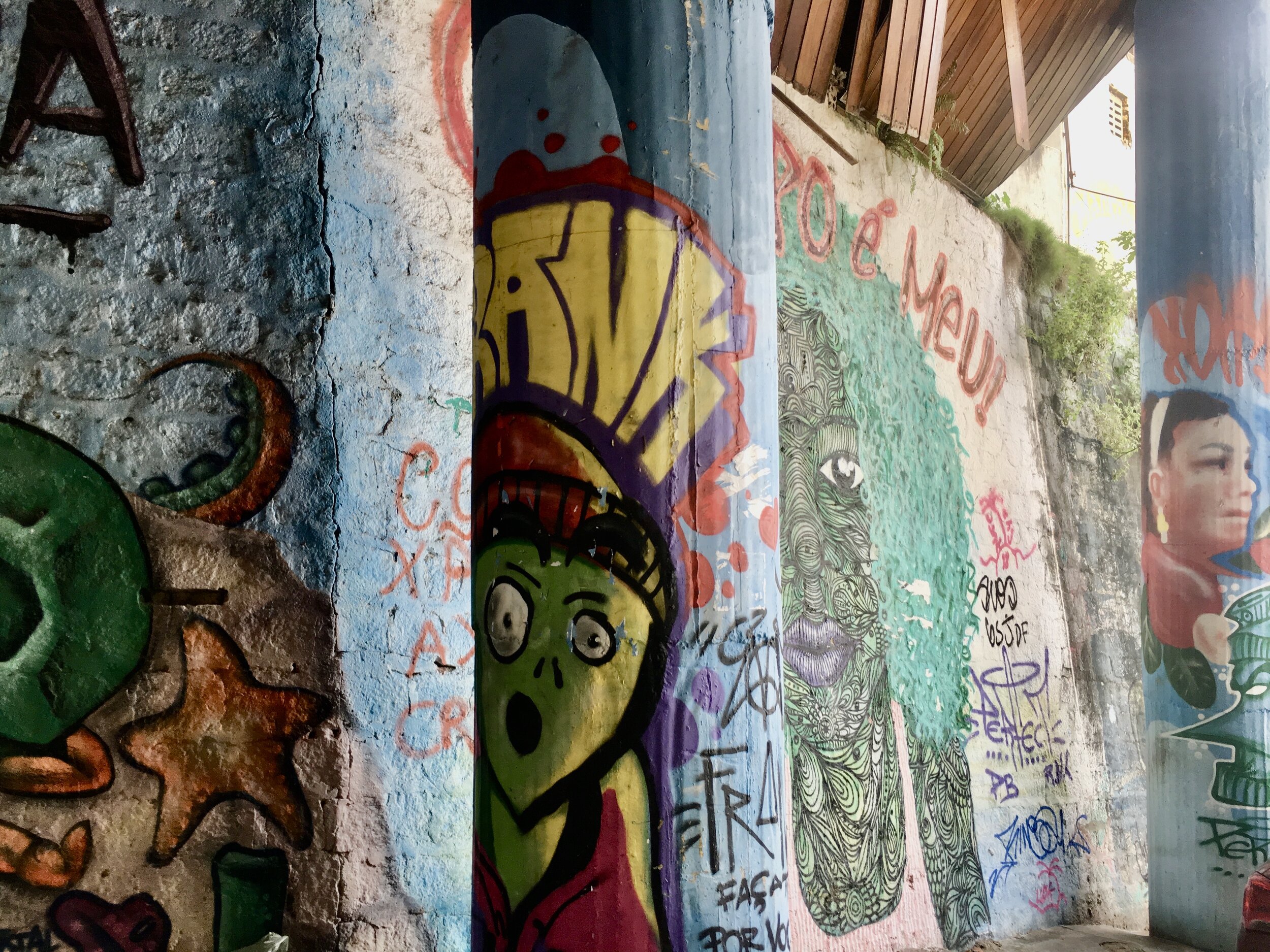
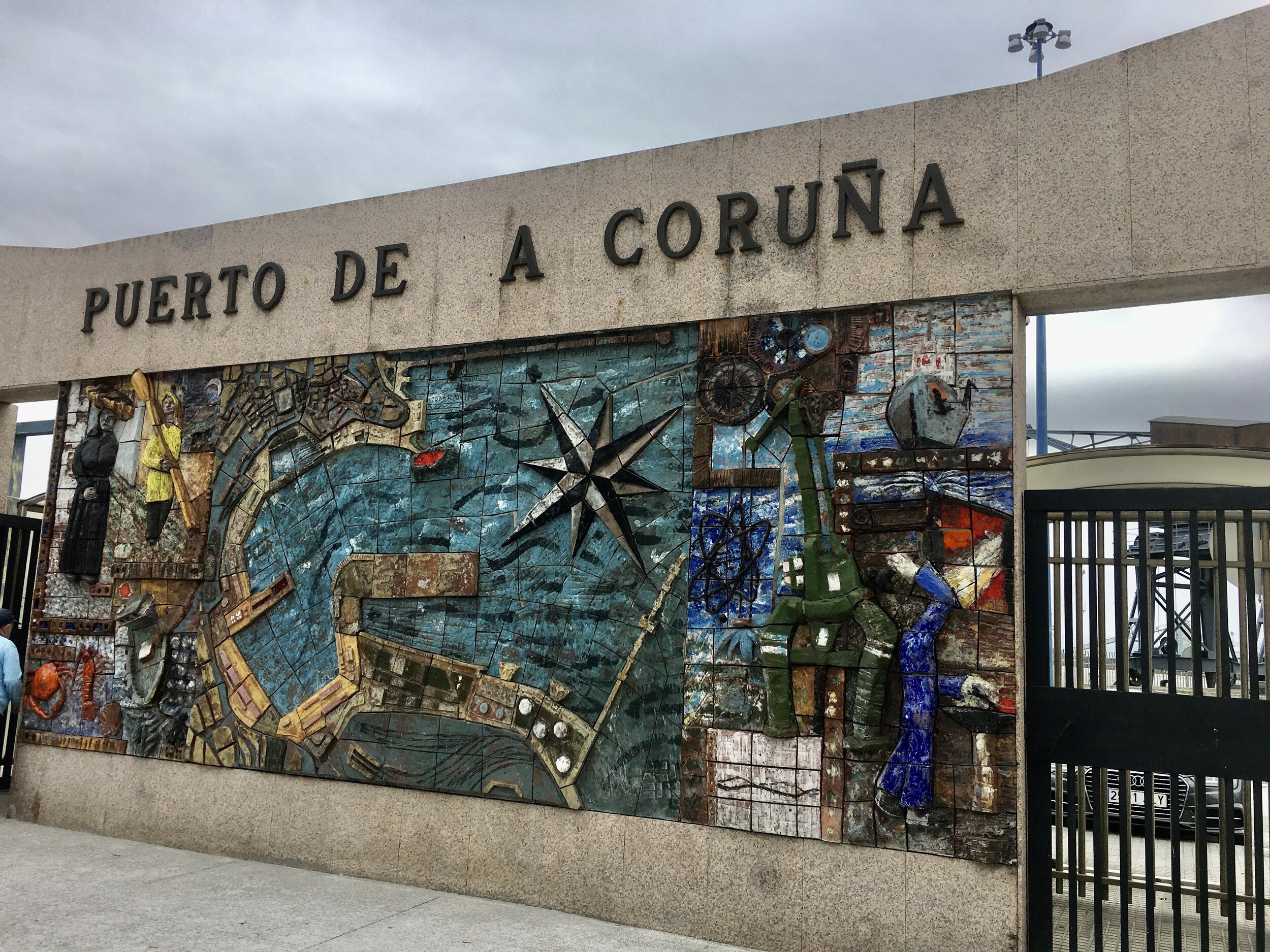
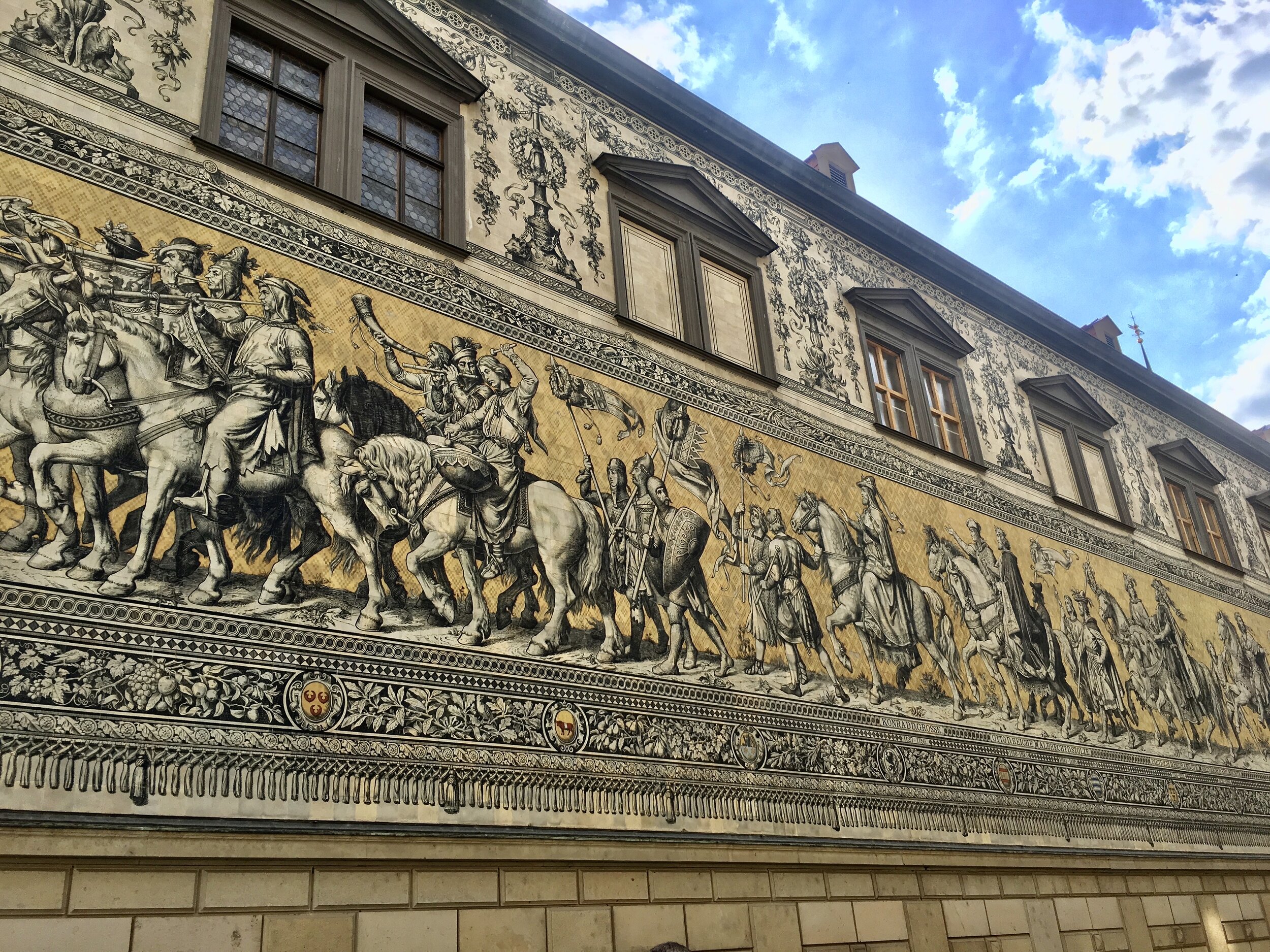
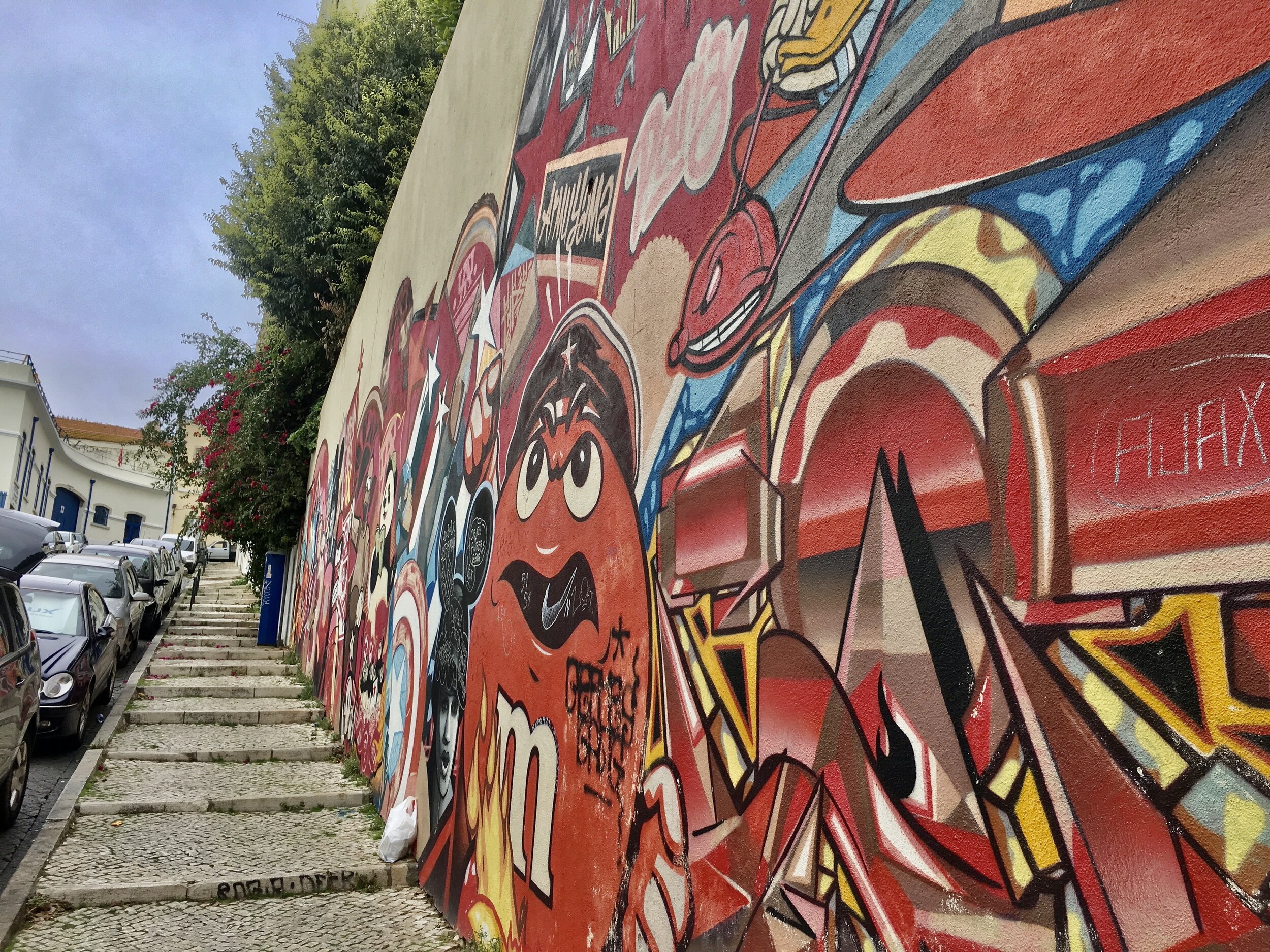

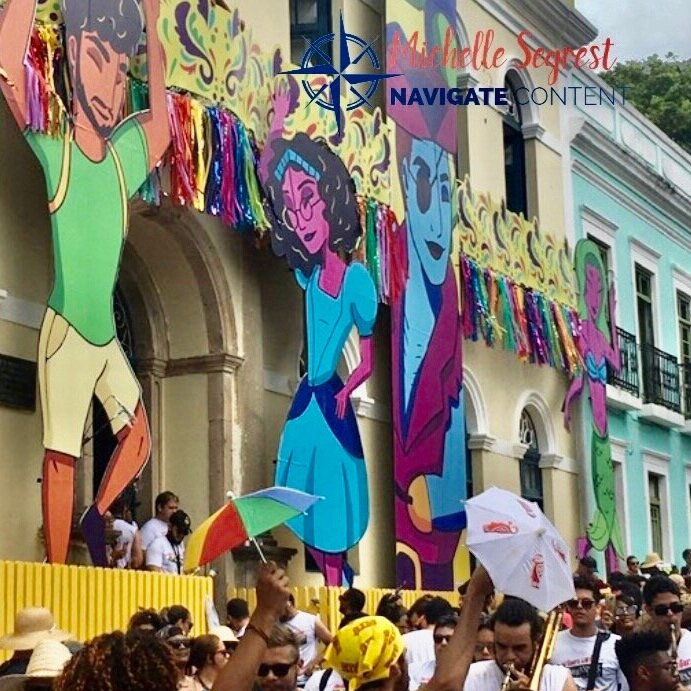
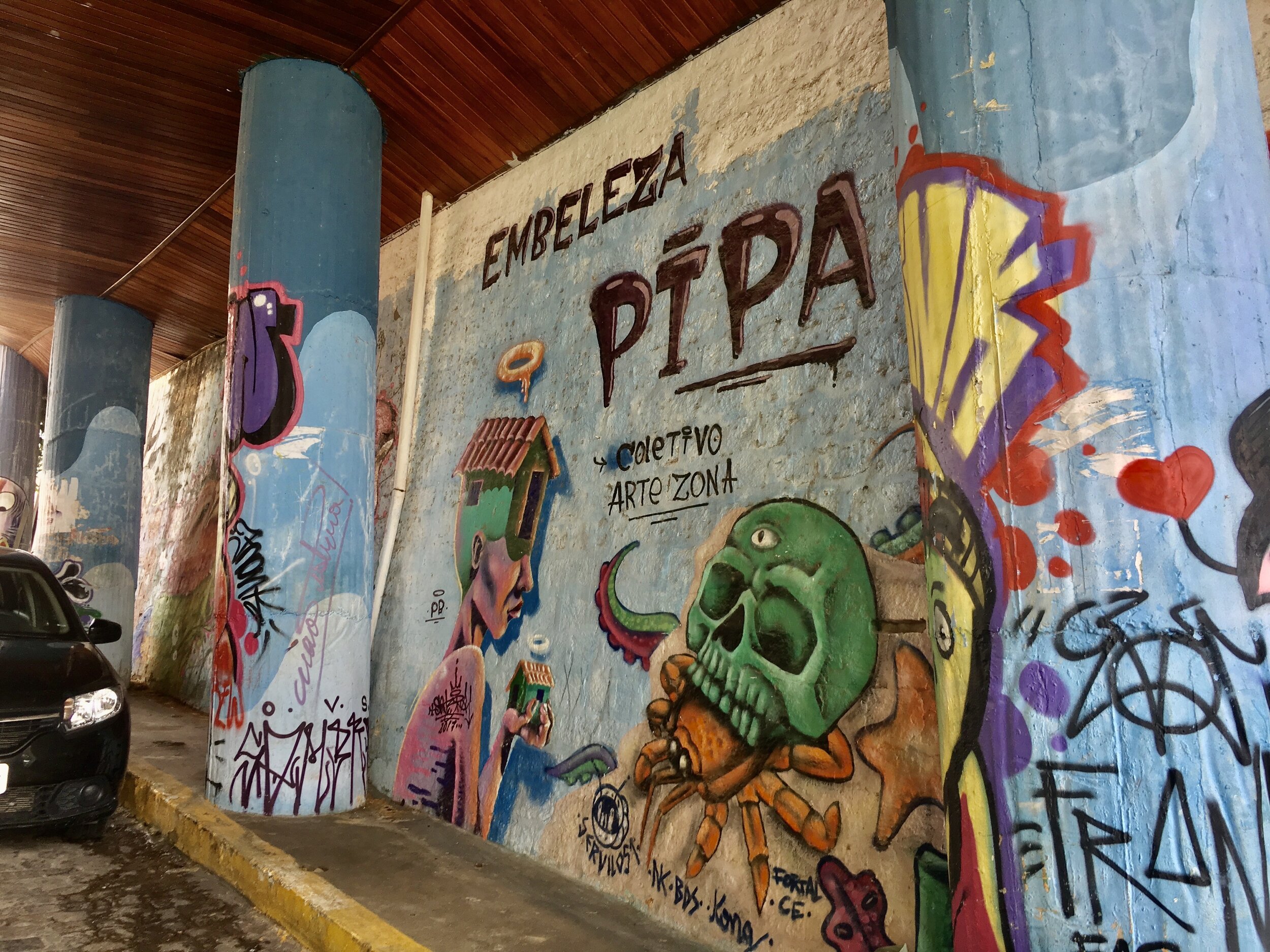
You may also like these RELATED ARTICLES:
If you like this article about the world’s best places to find street art and graffiti, please PIN IT!
This page contains affiliate links. If you click on the product links and make a purchase, it allows me to make a small commission at no extra cost to you! Thank you for your support and I hope you find value in this content!















